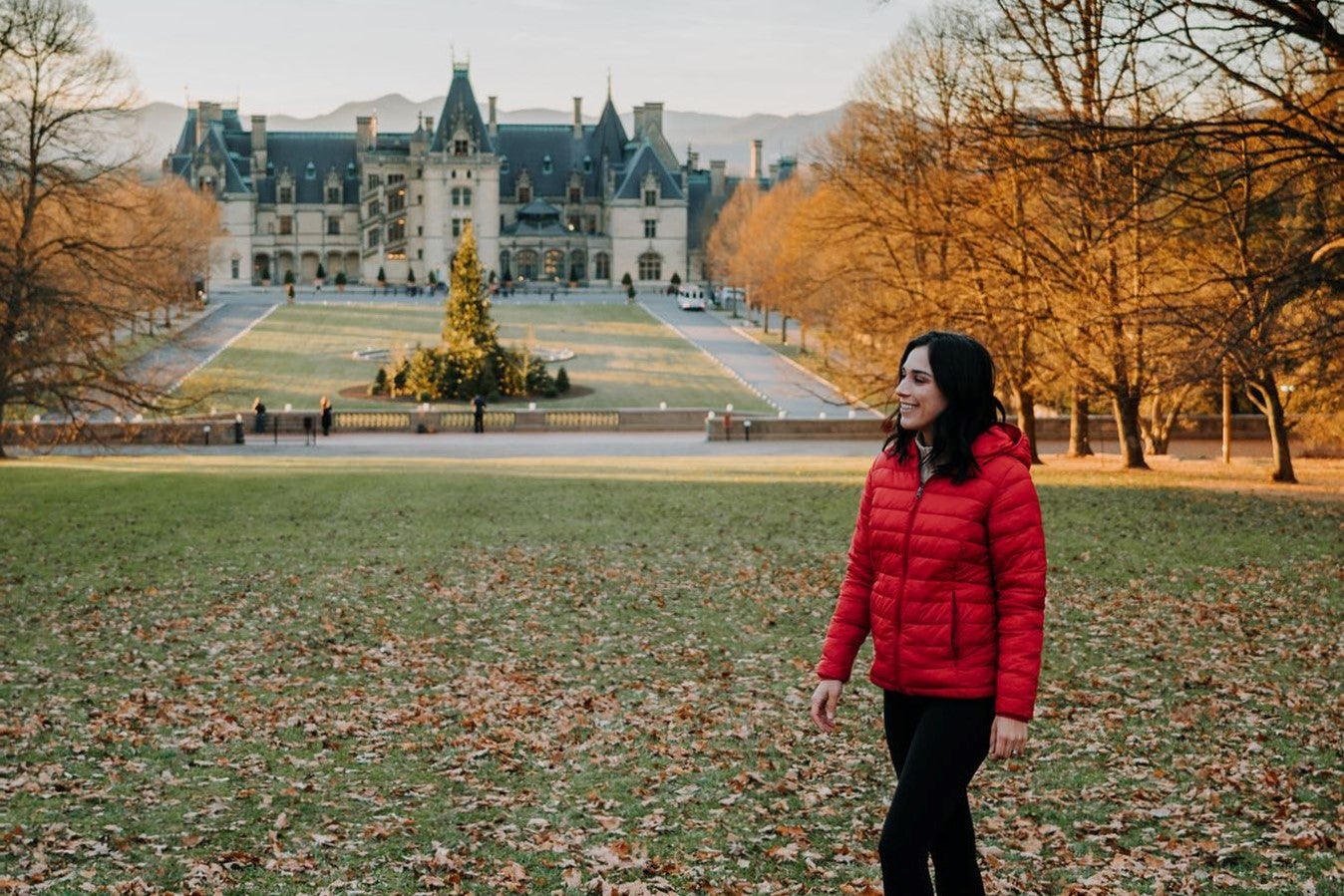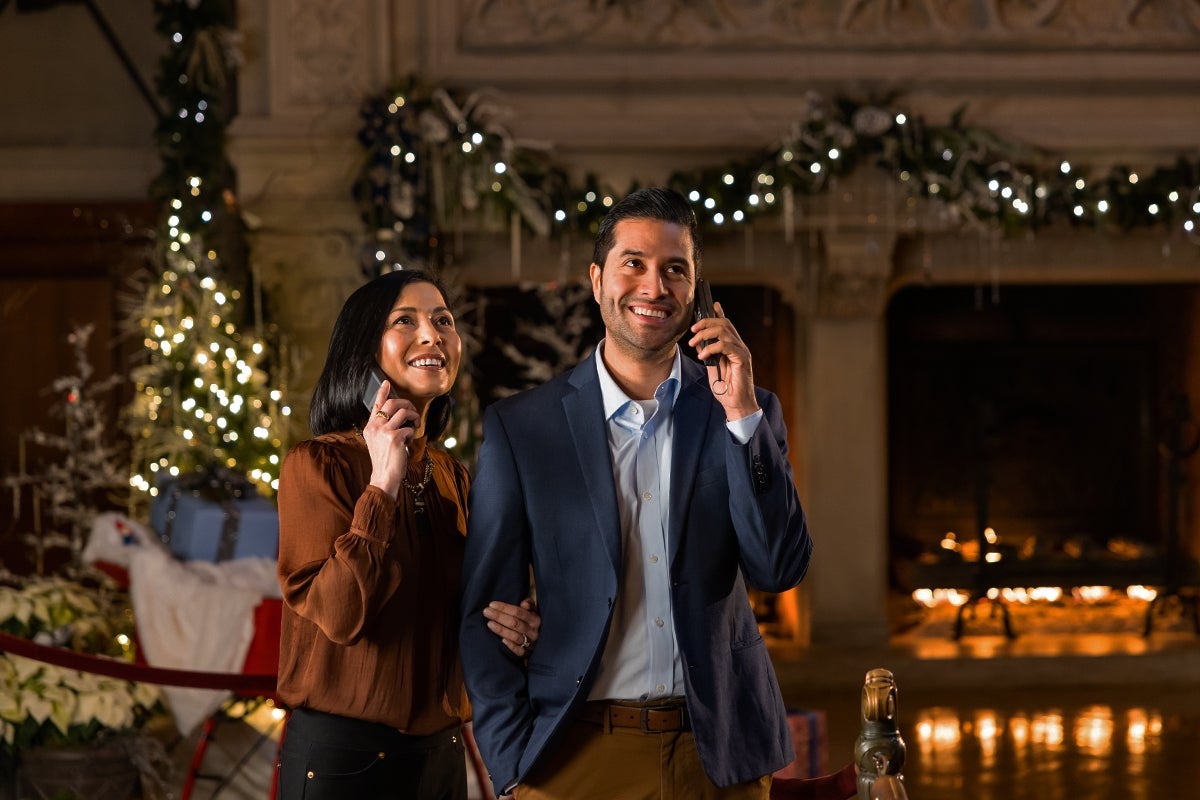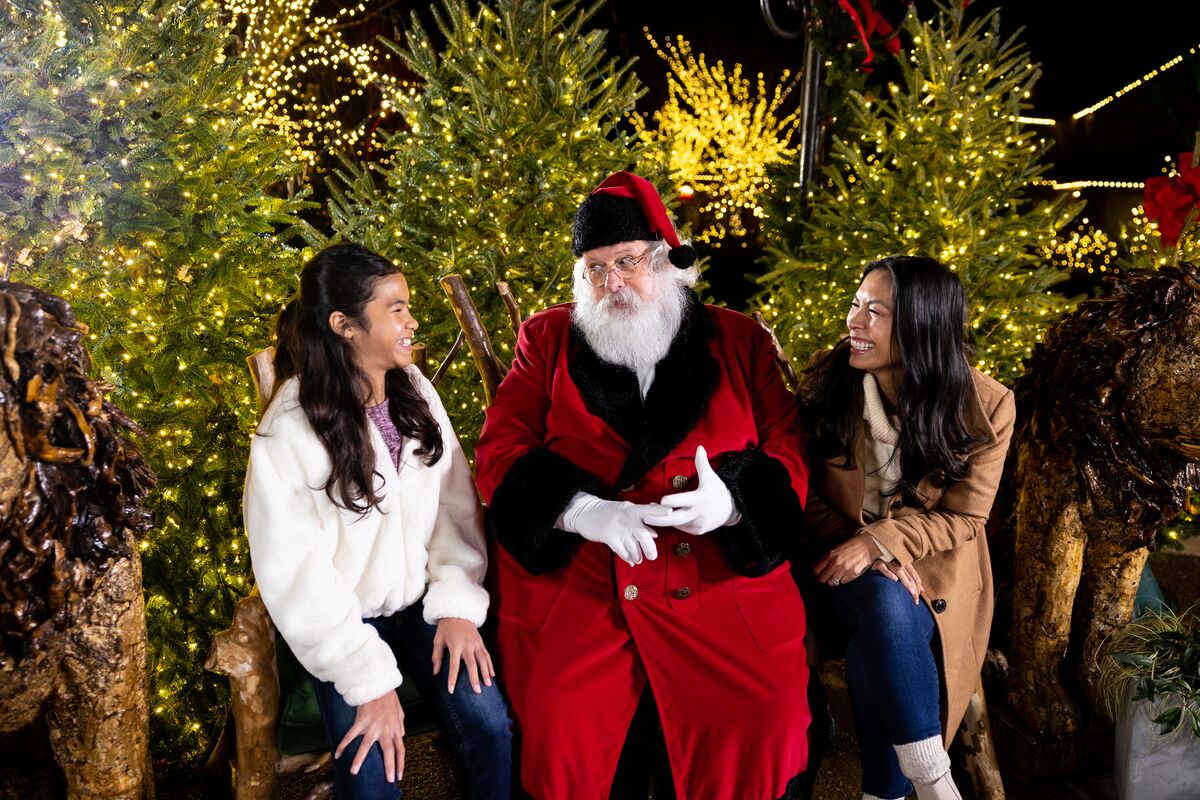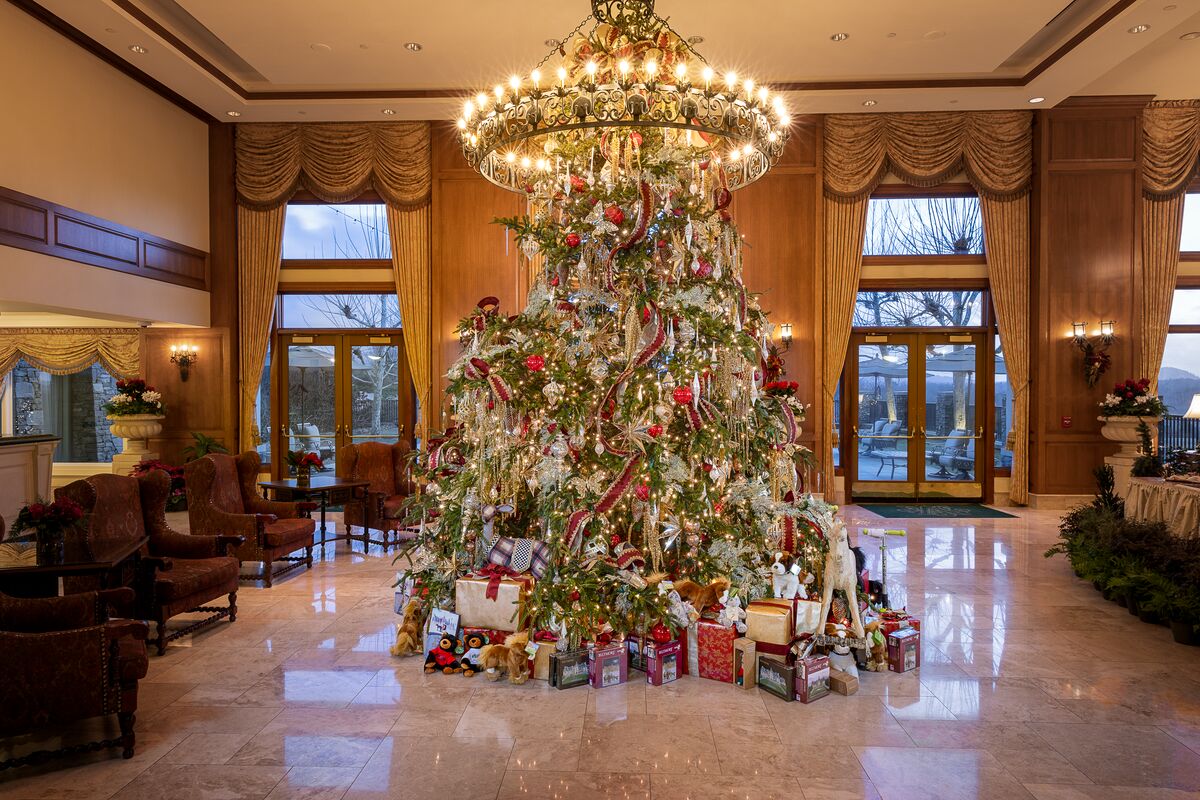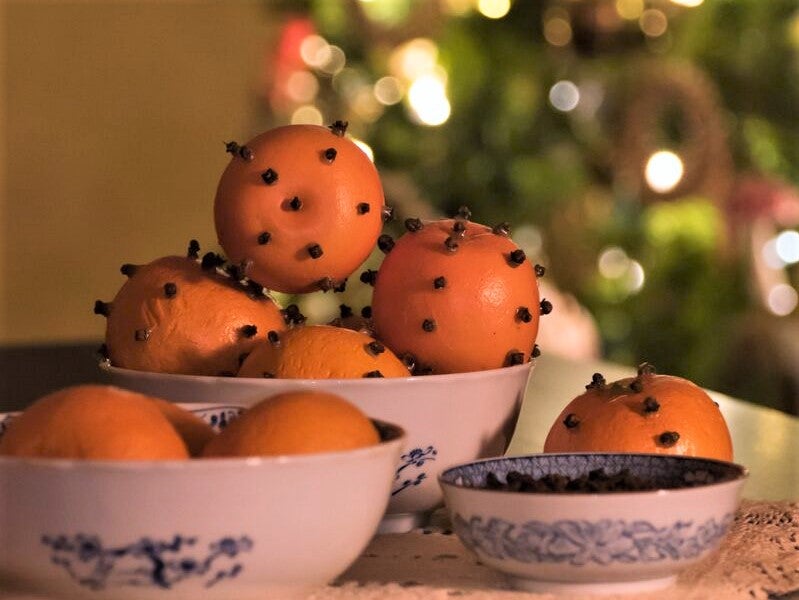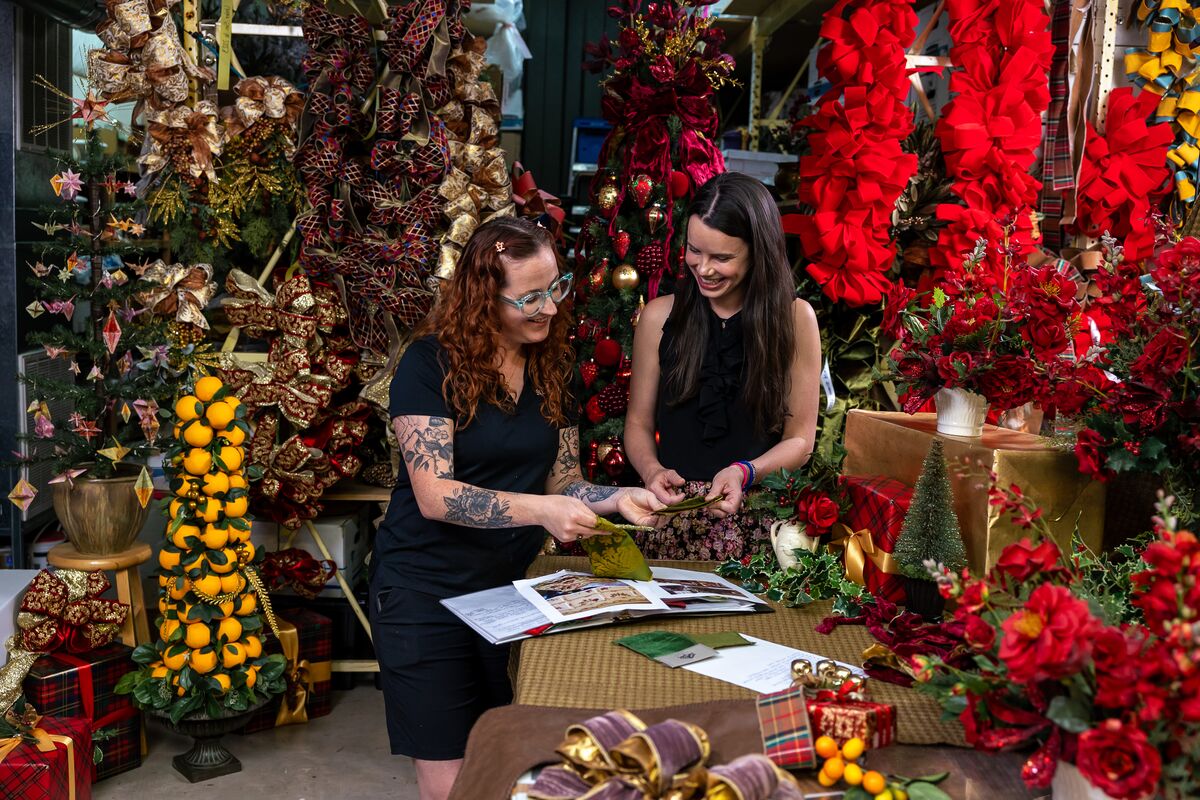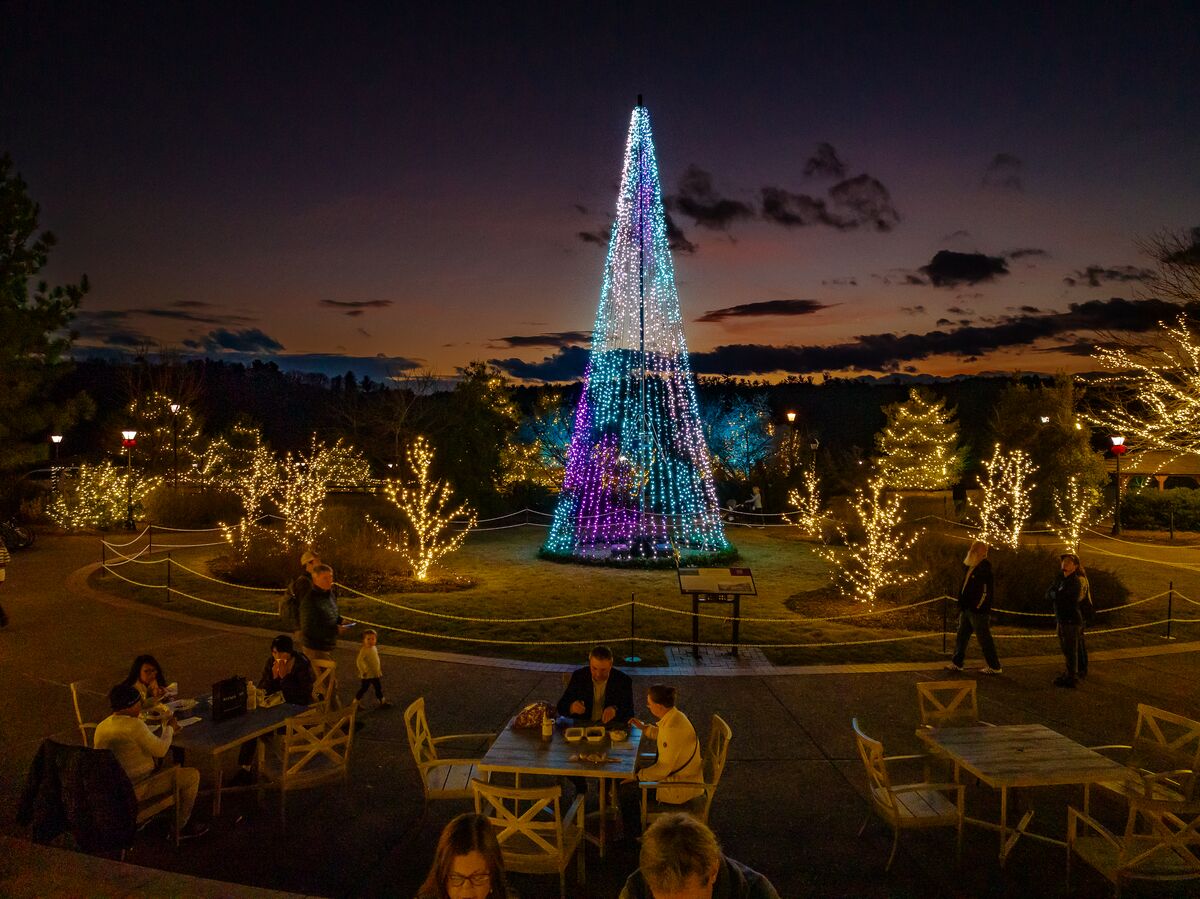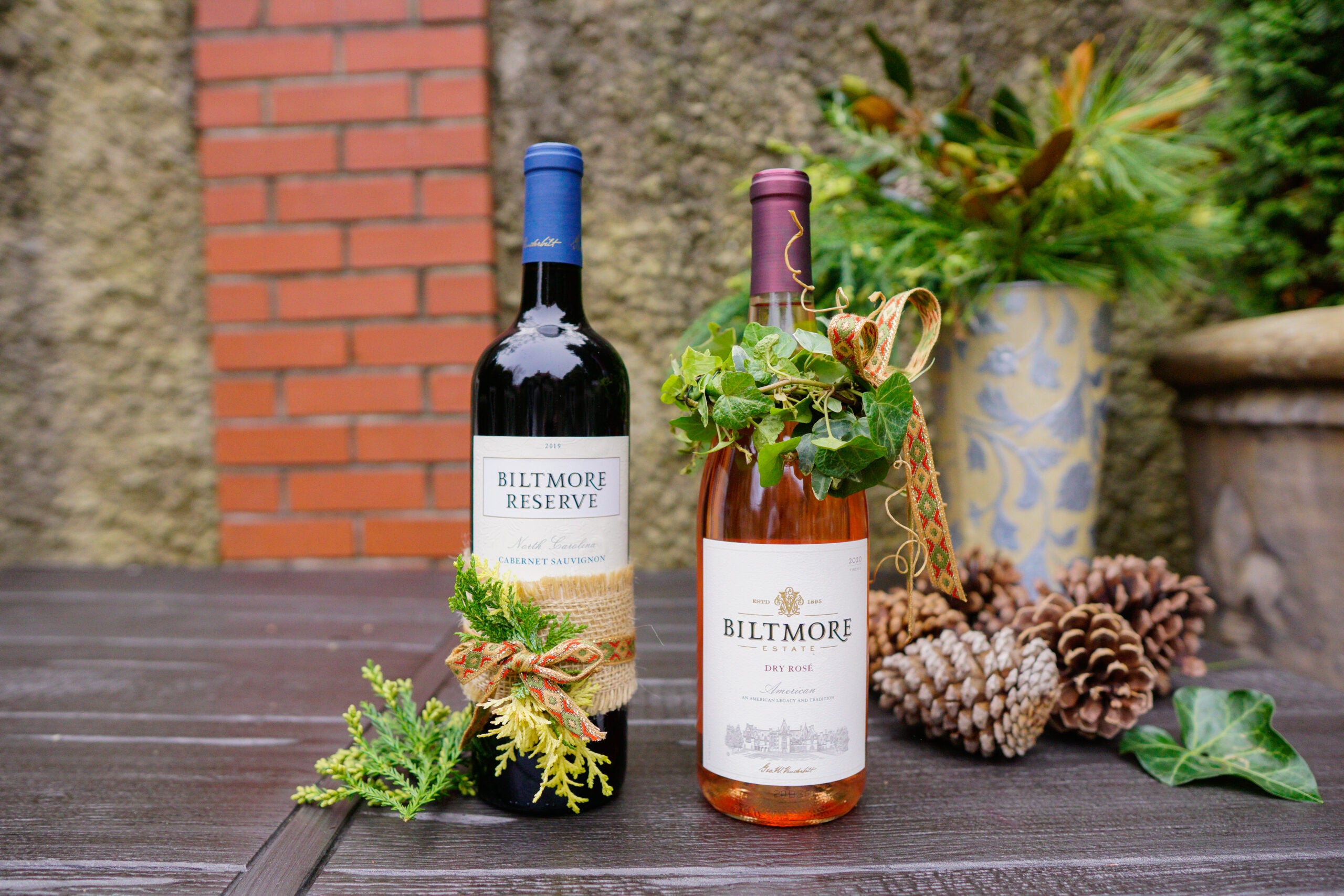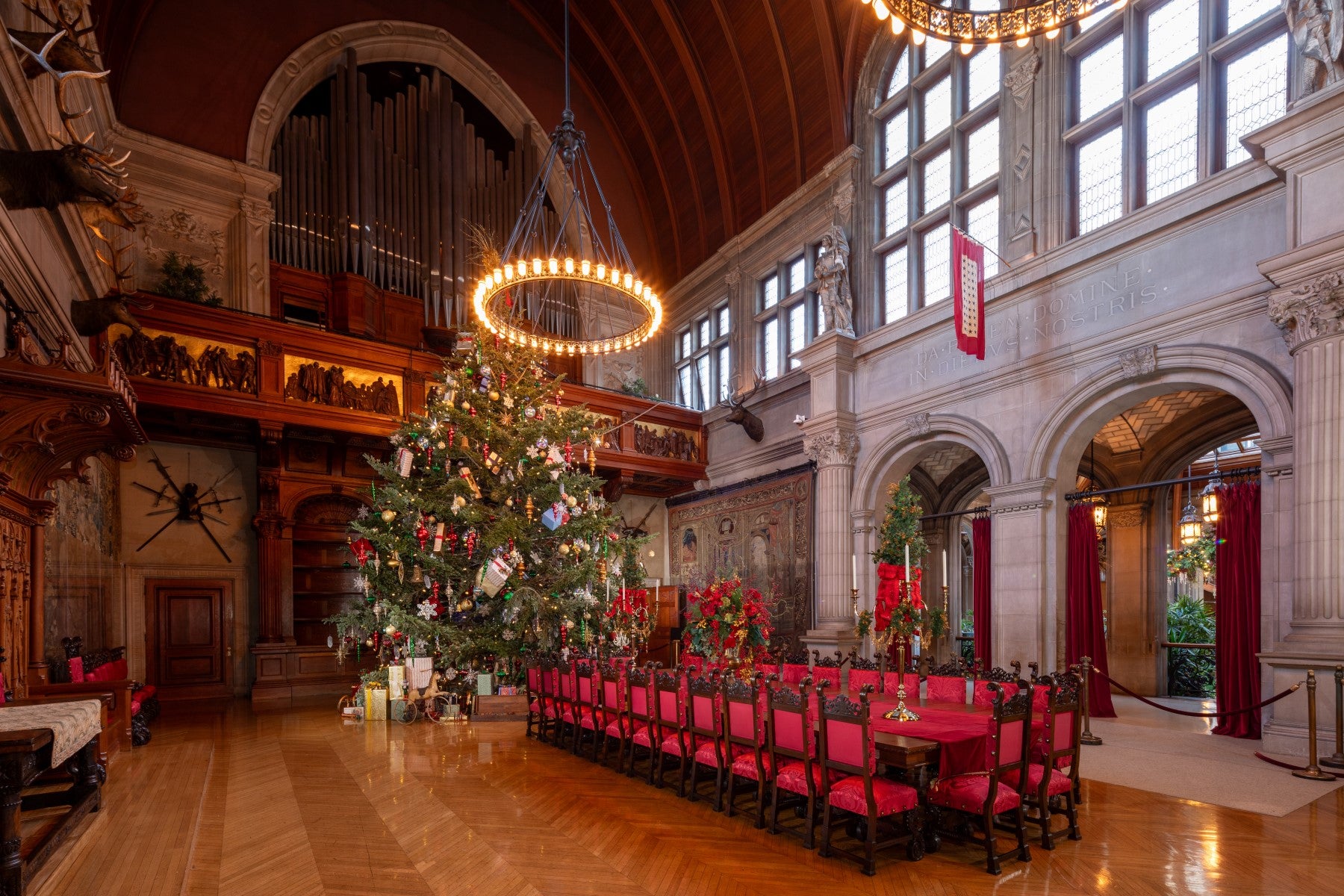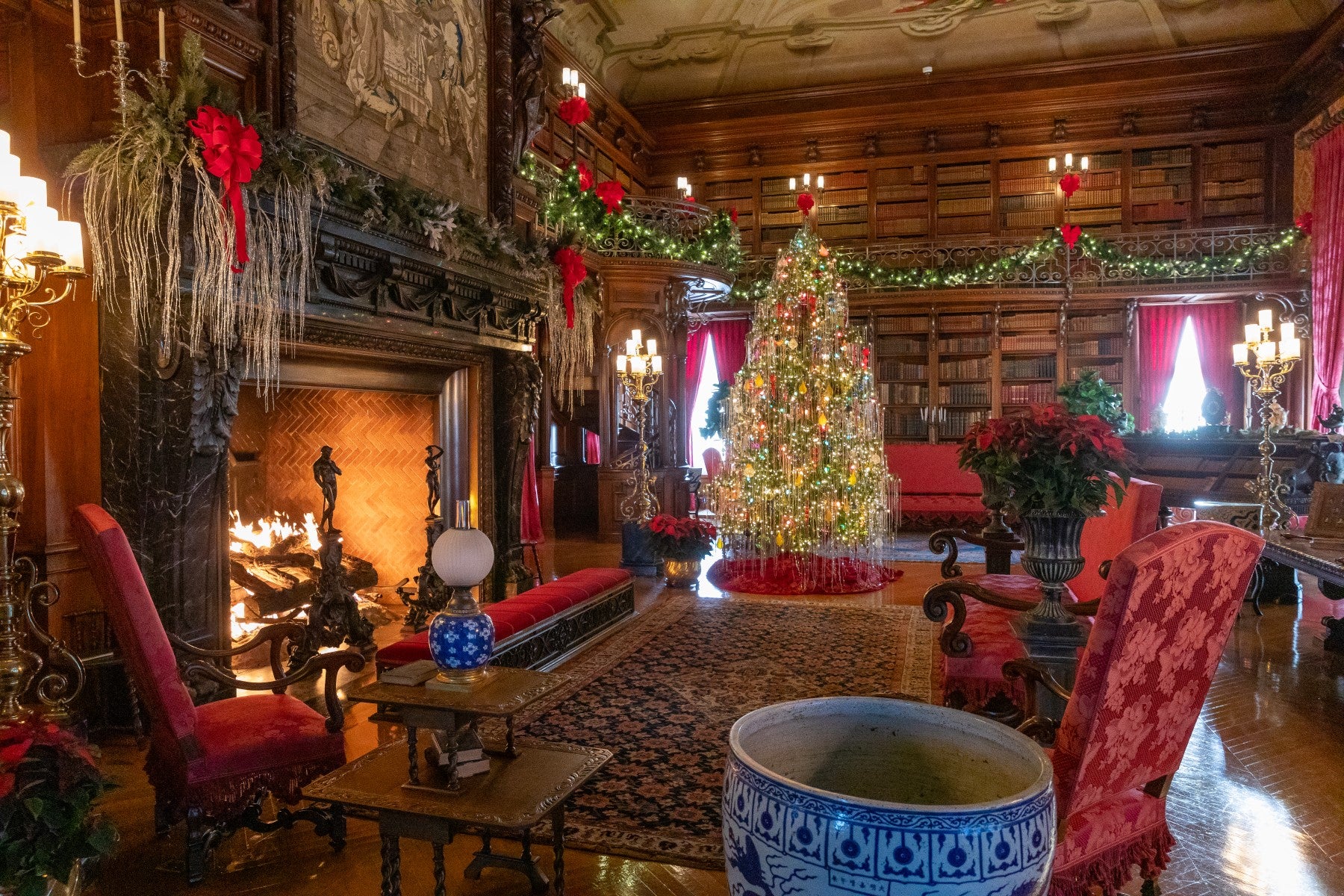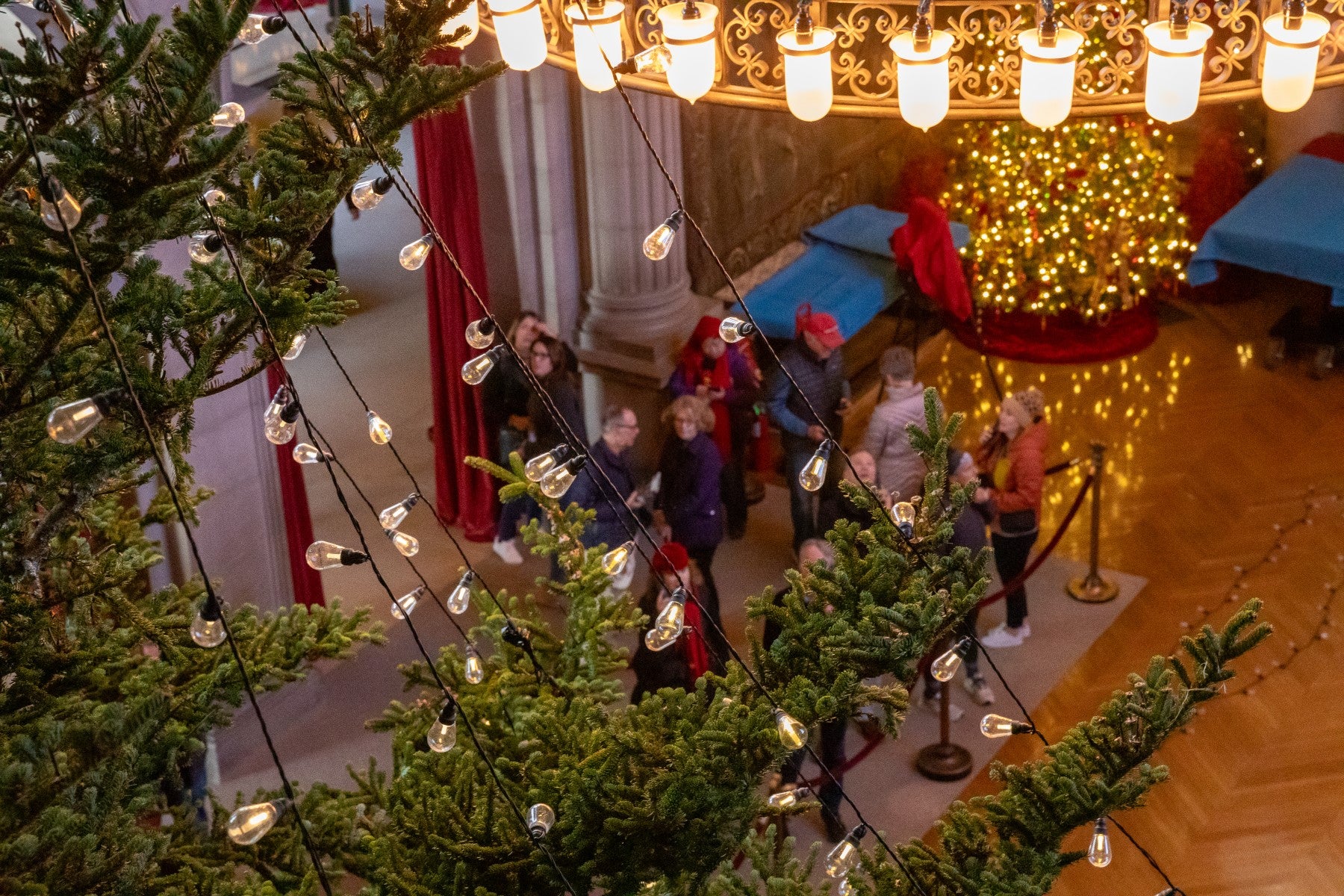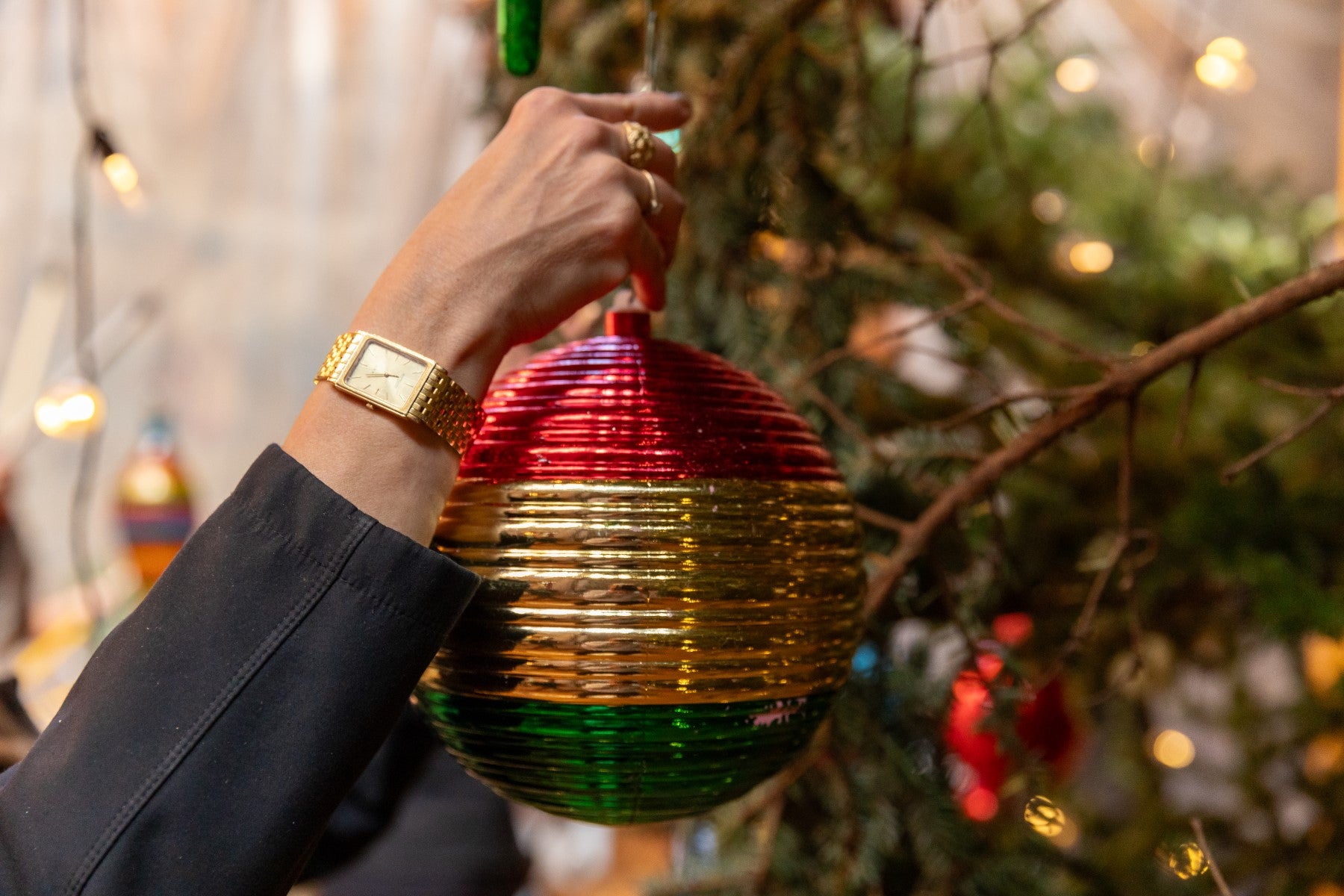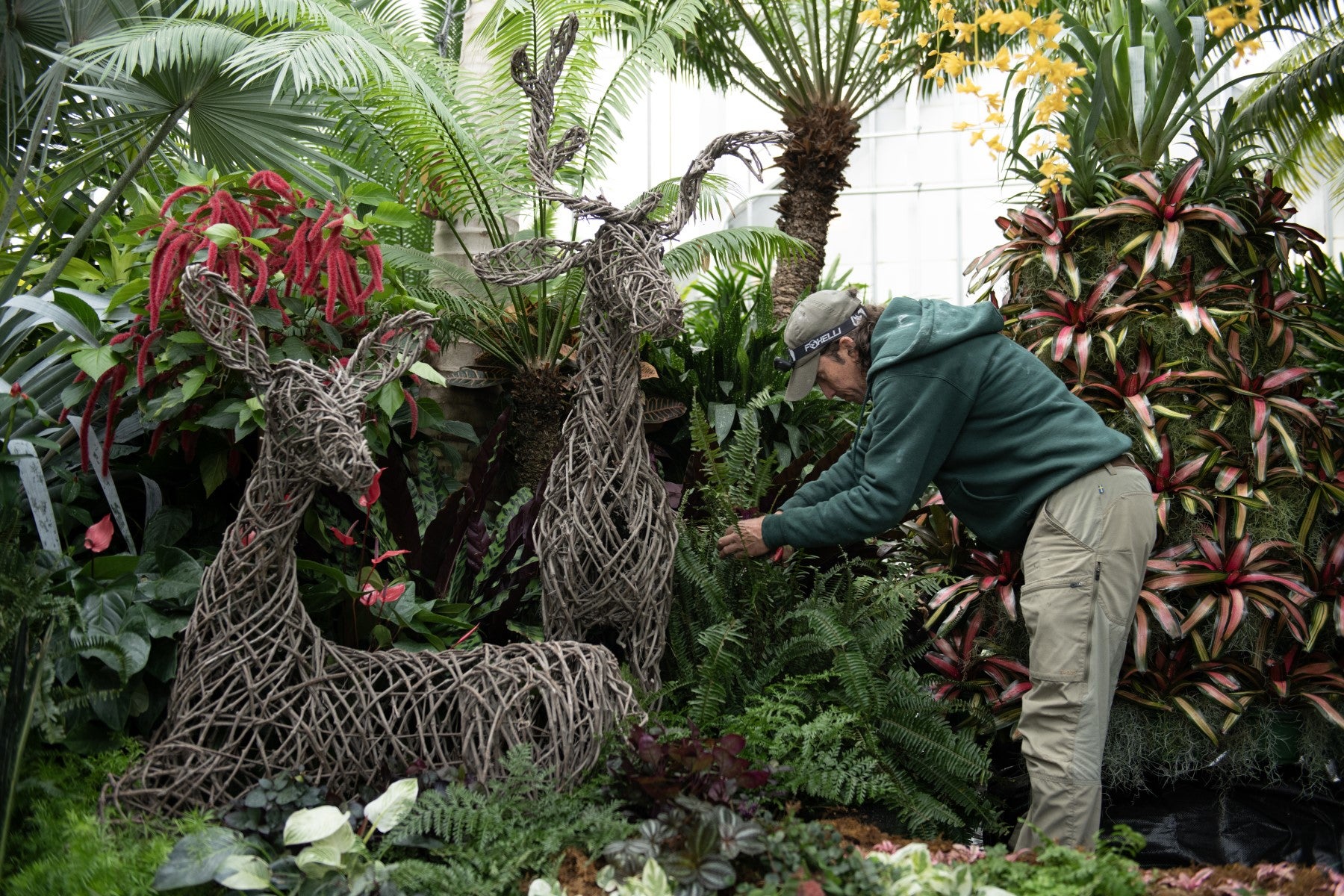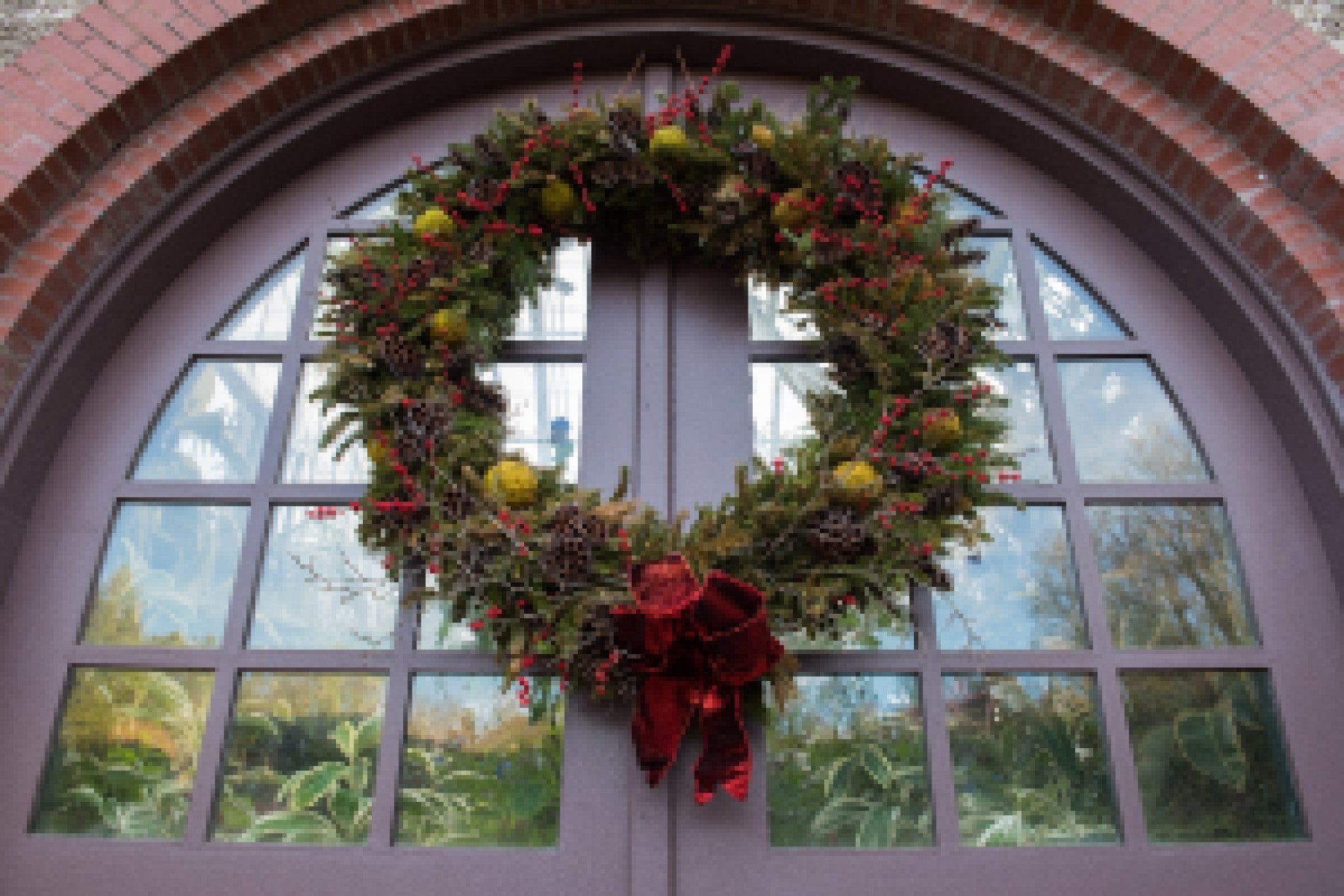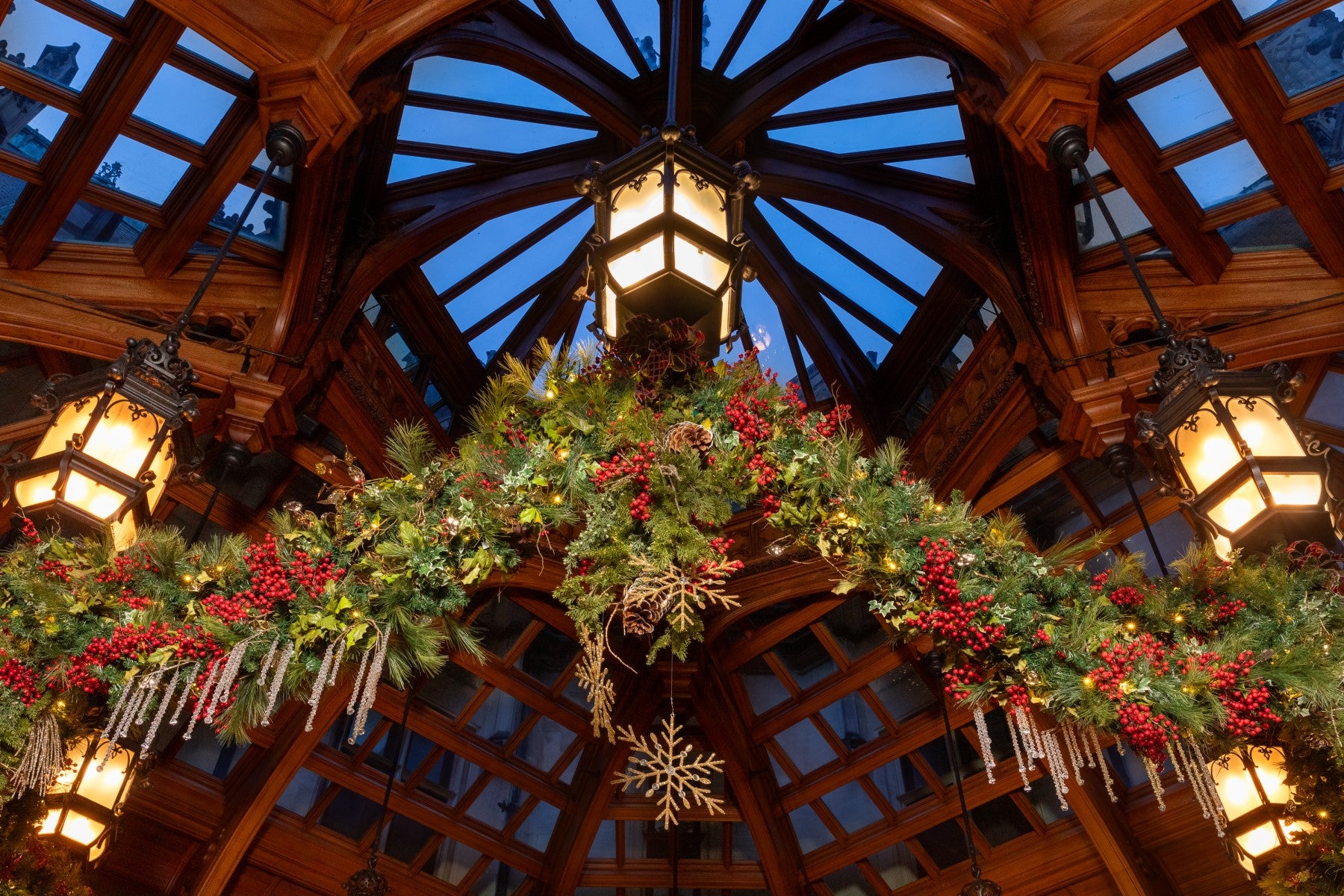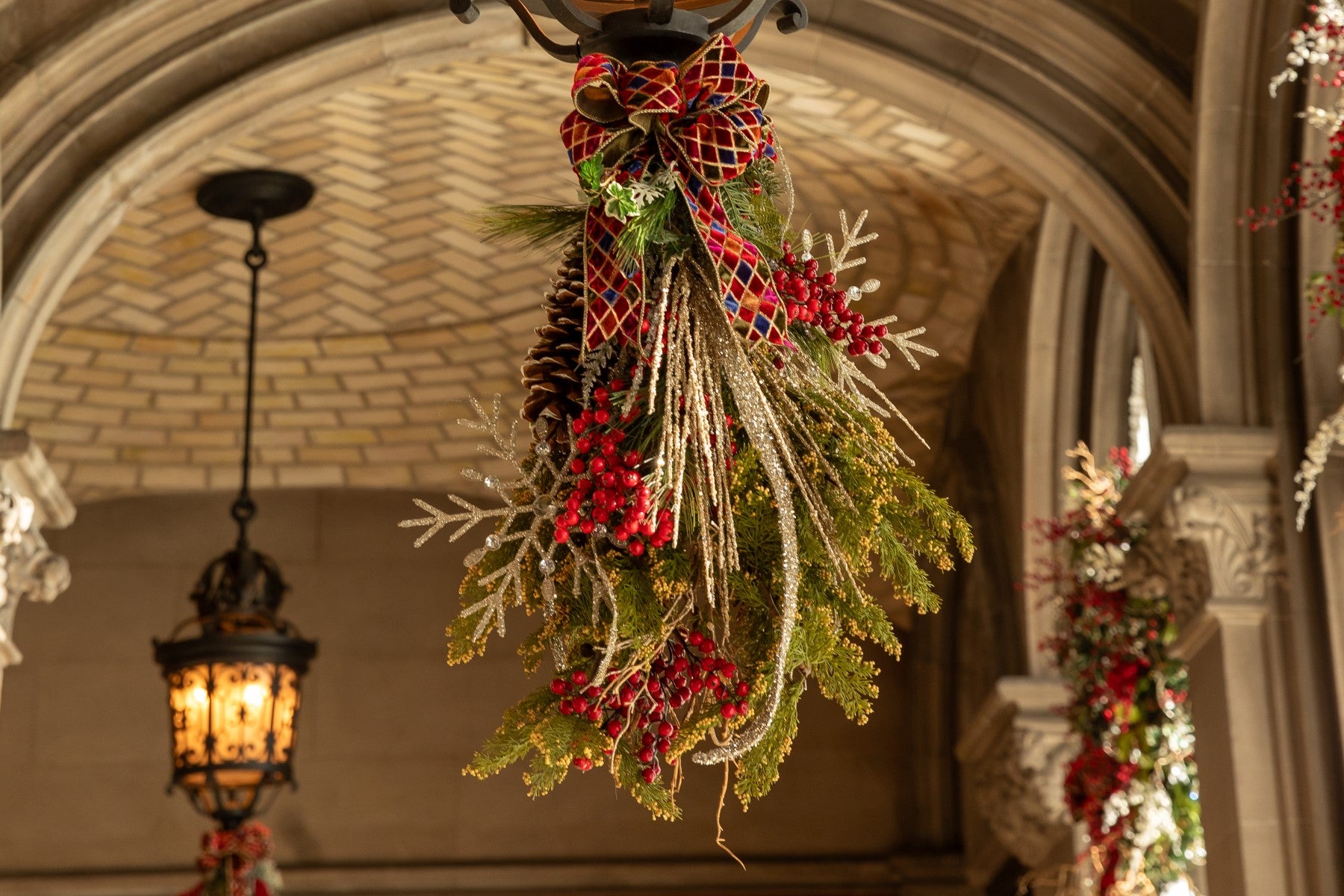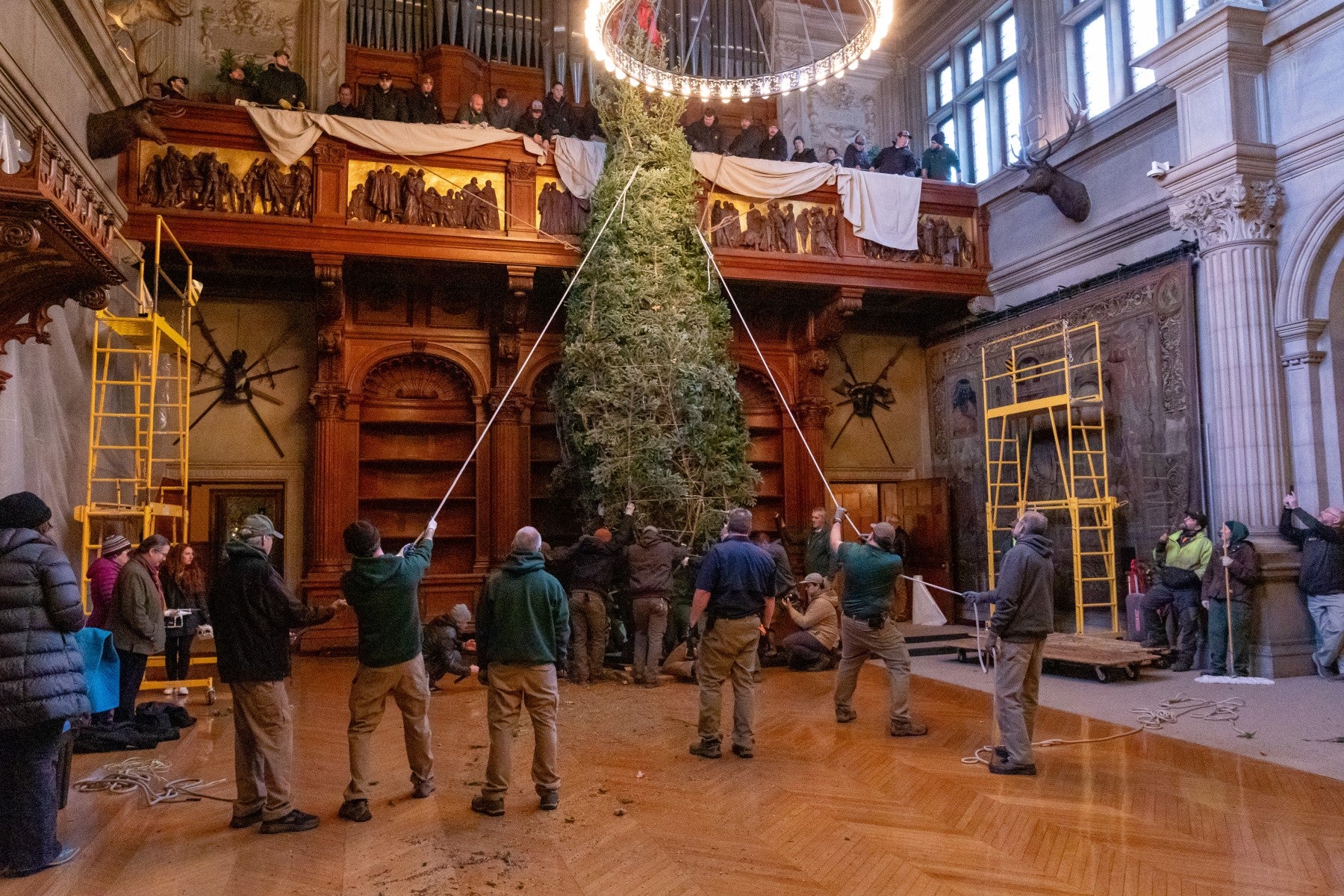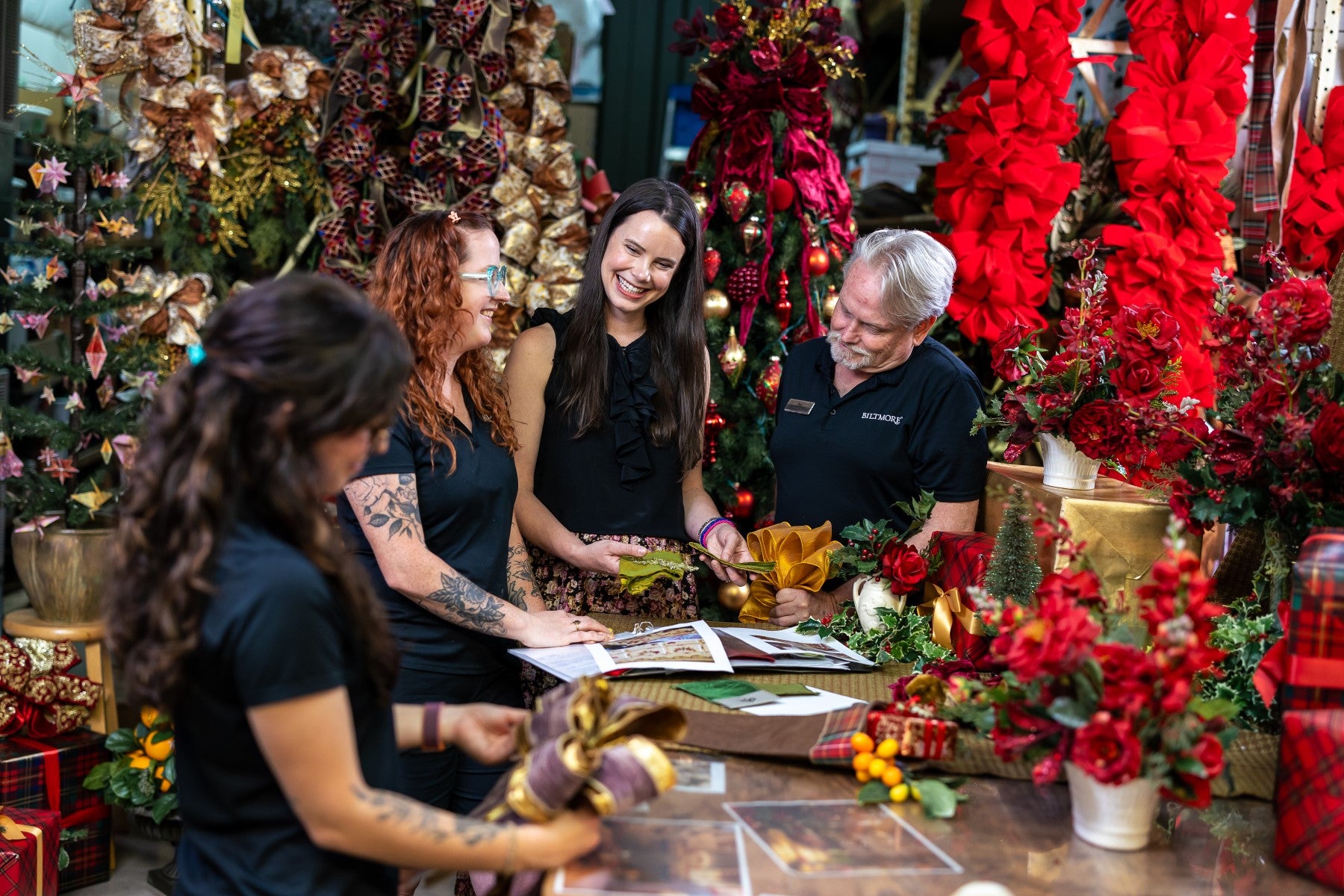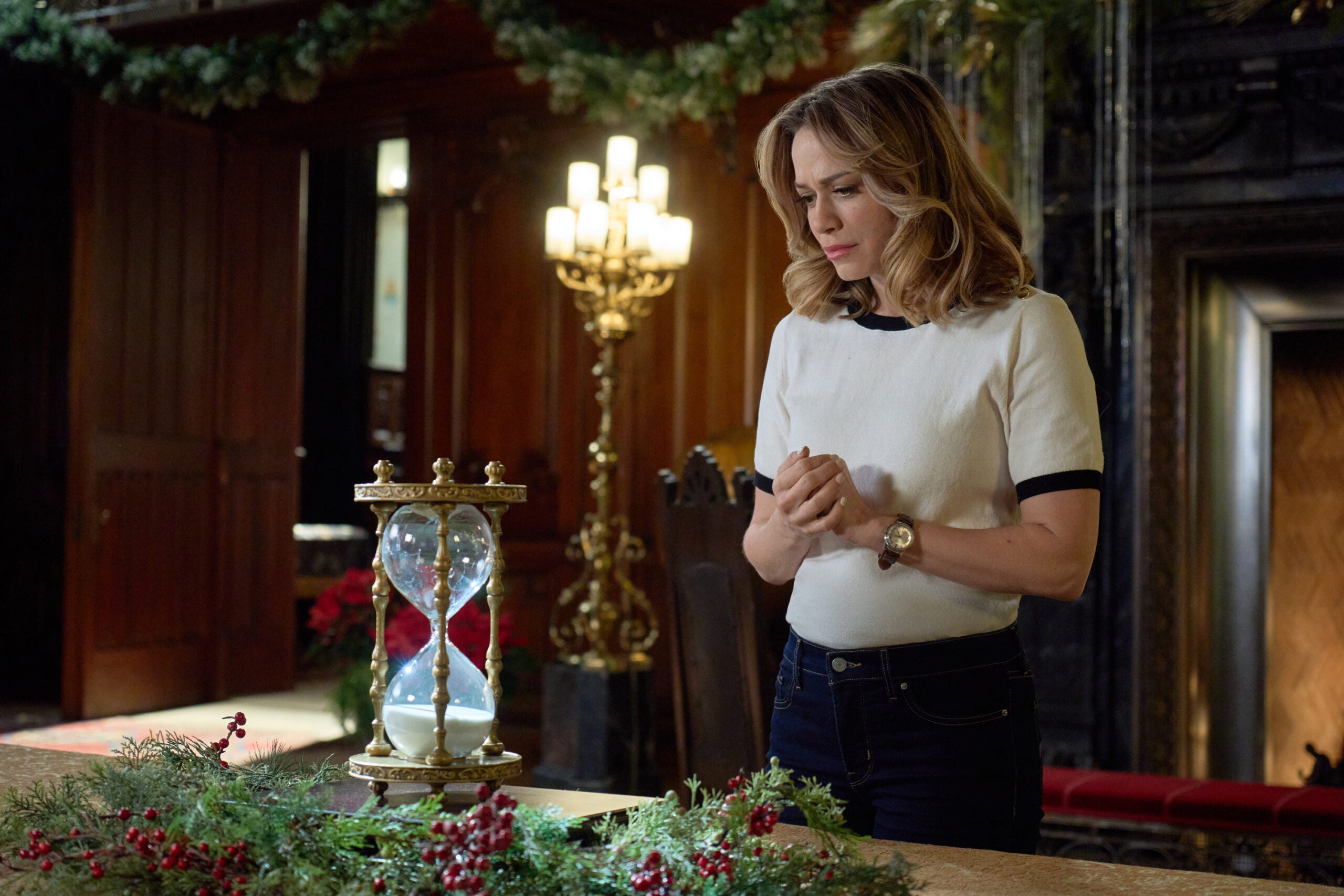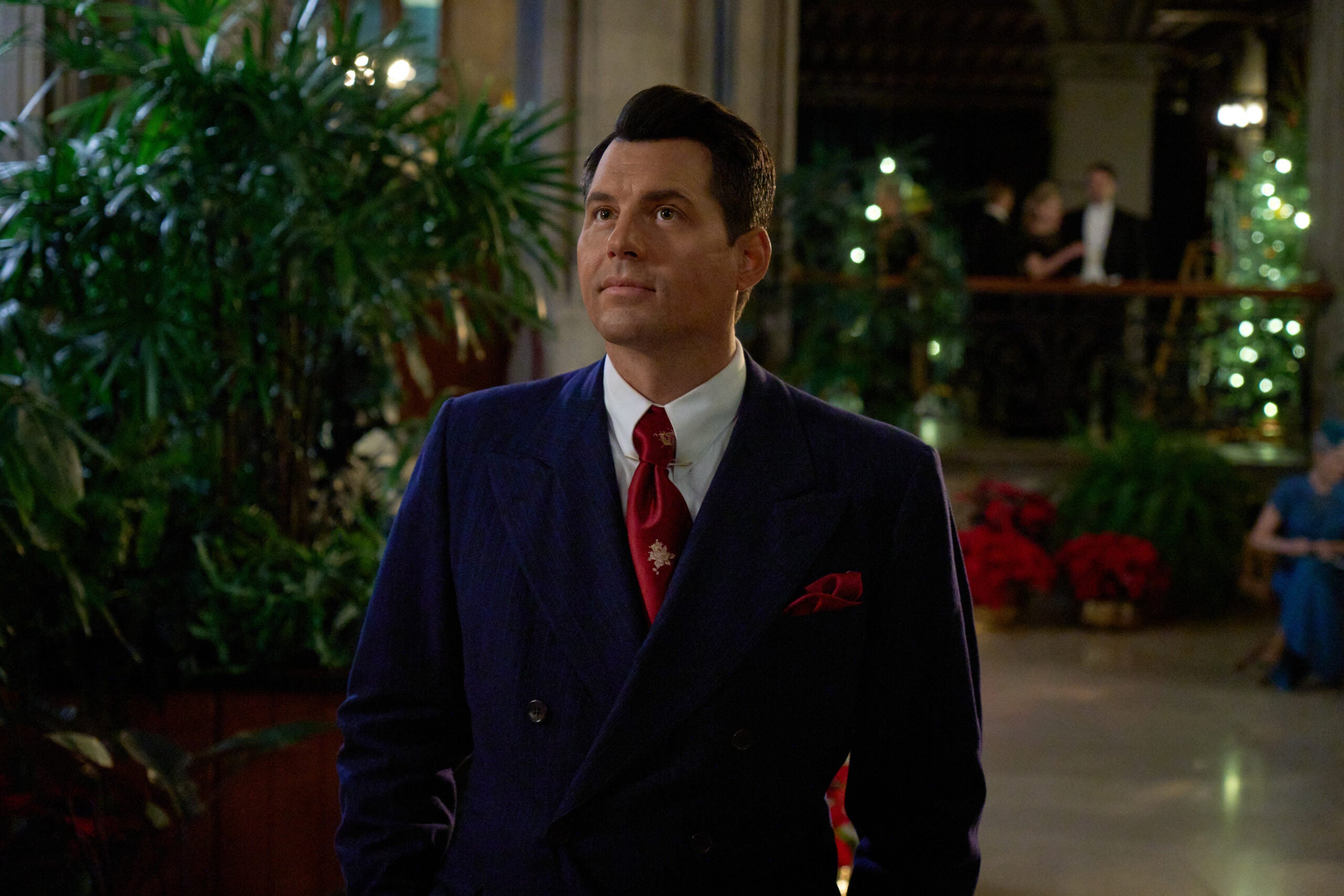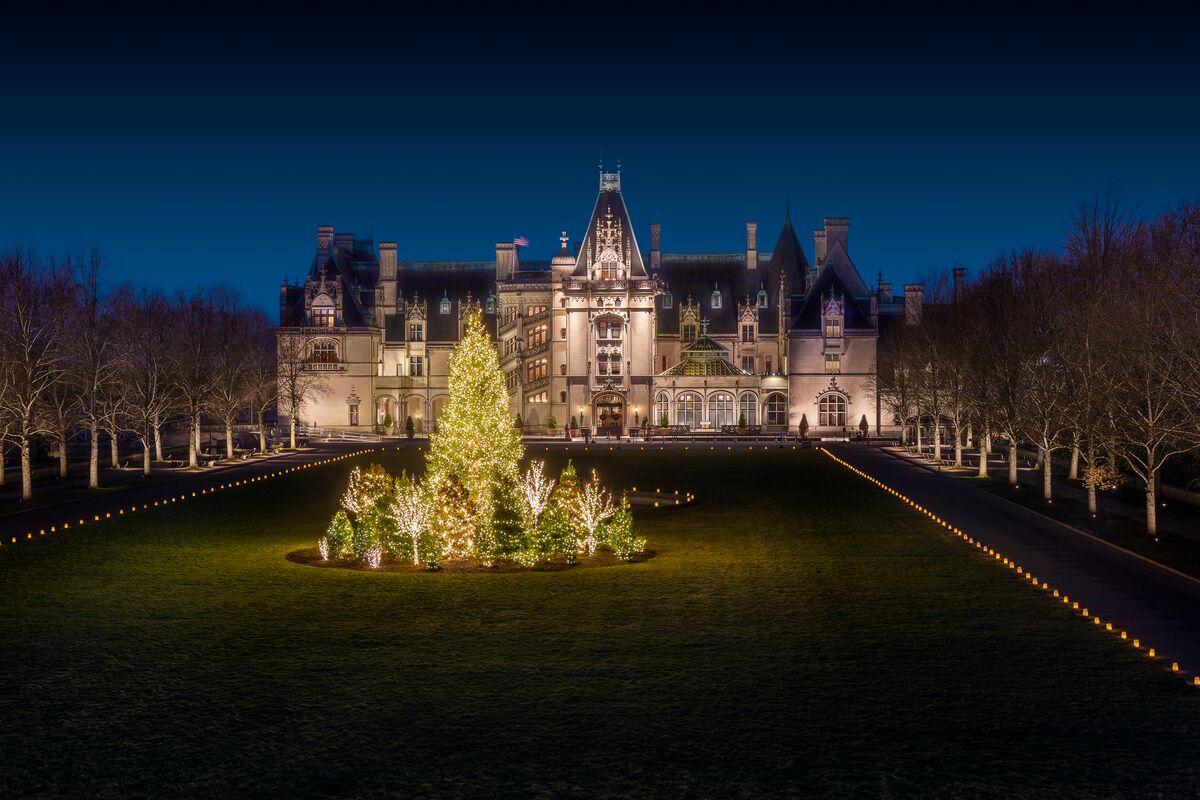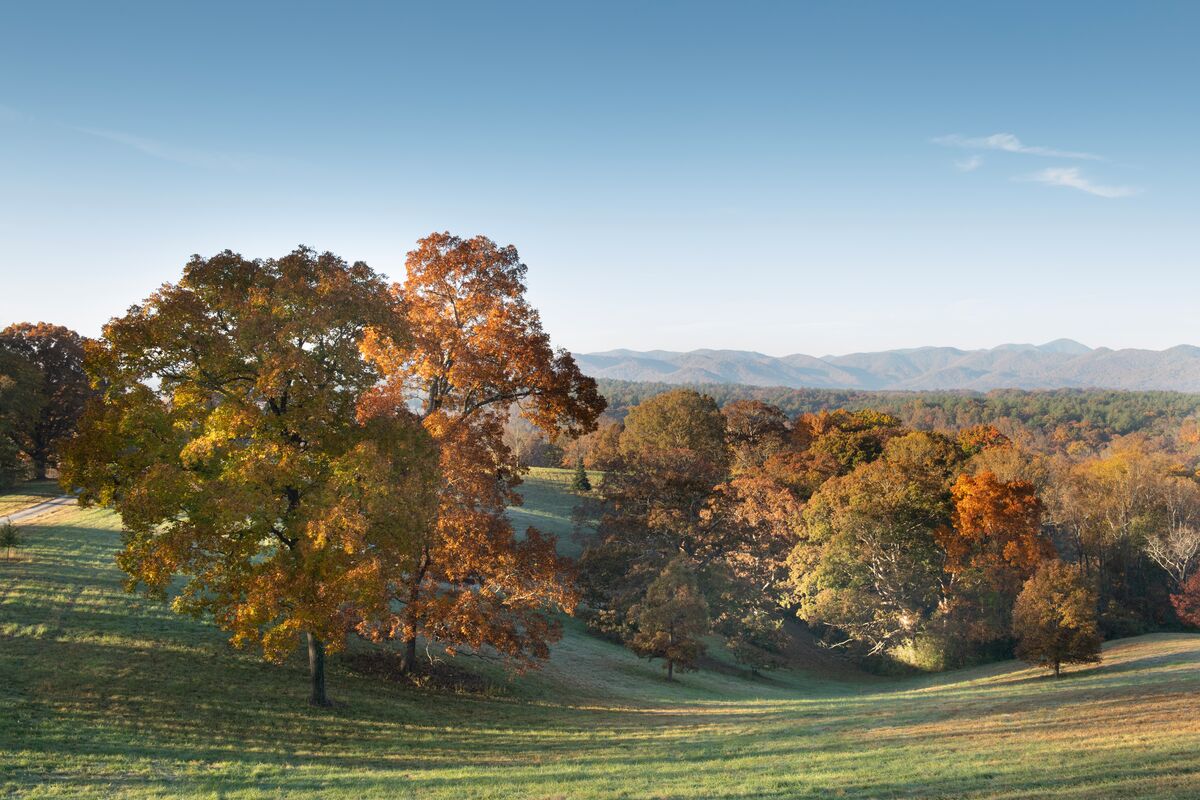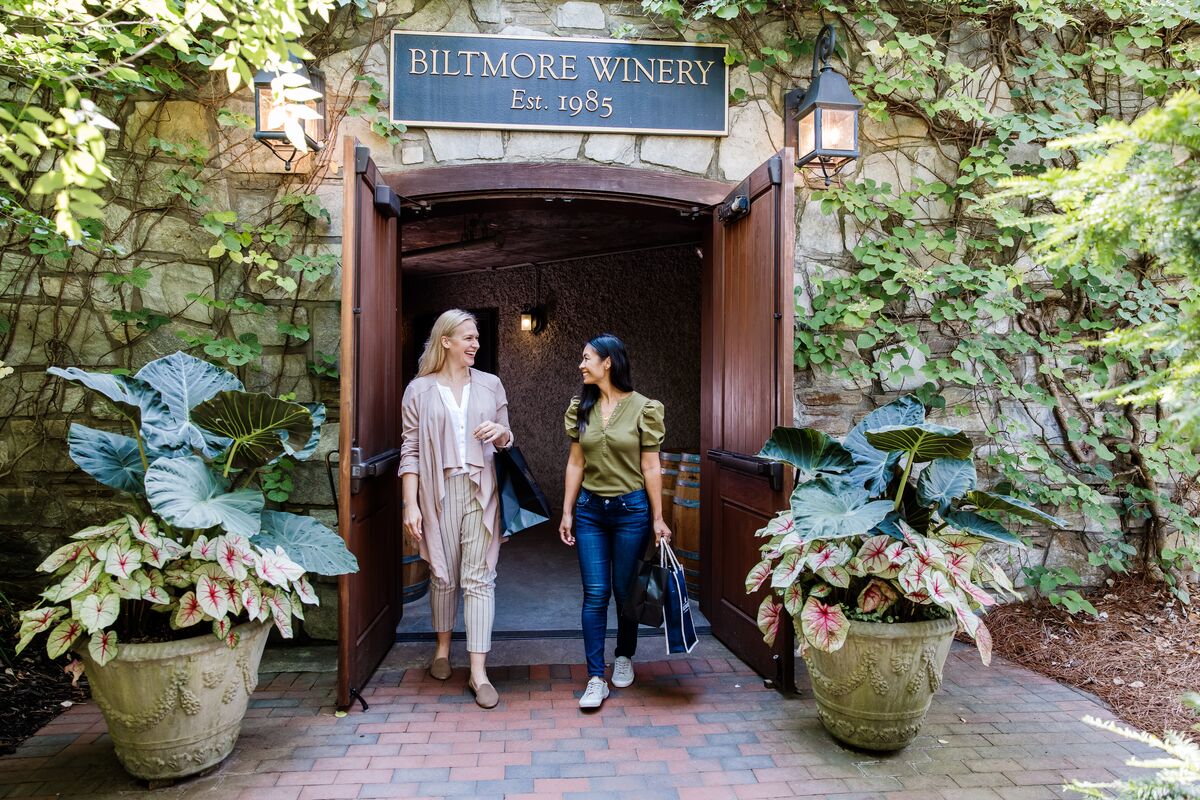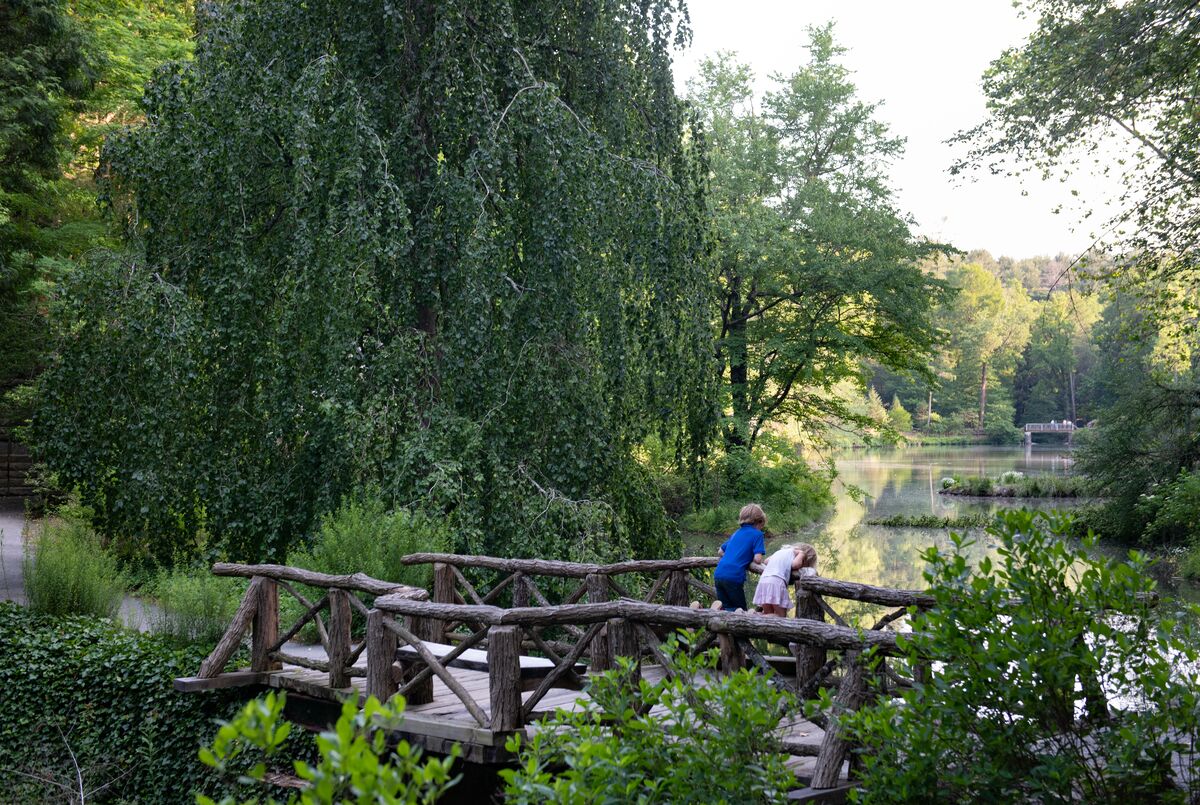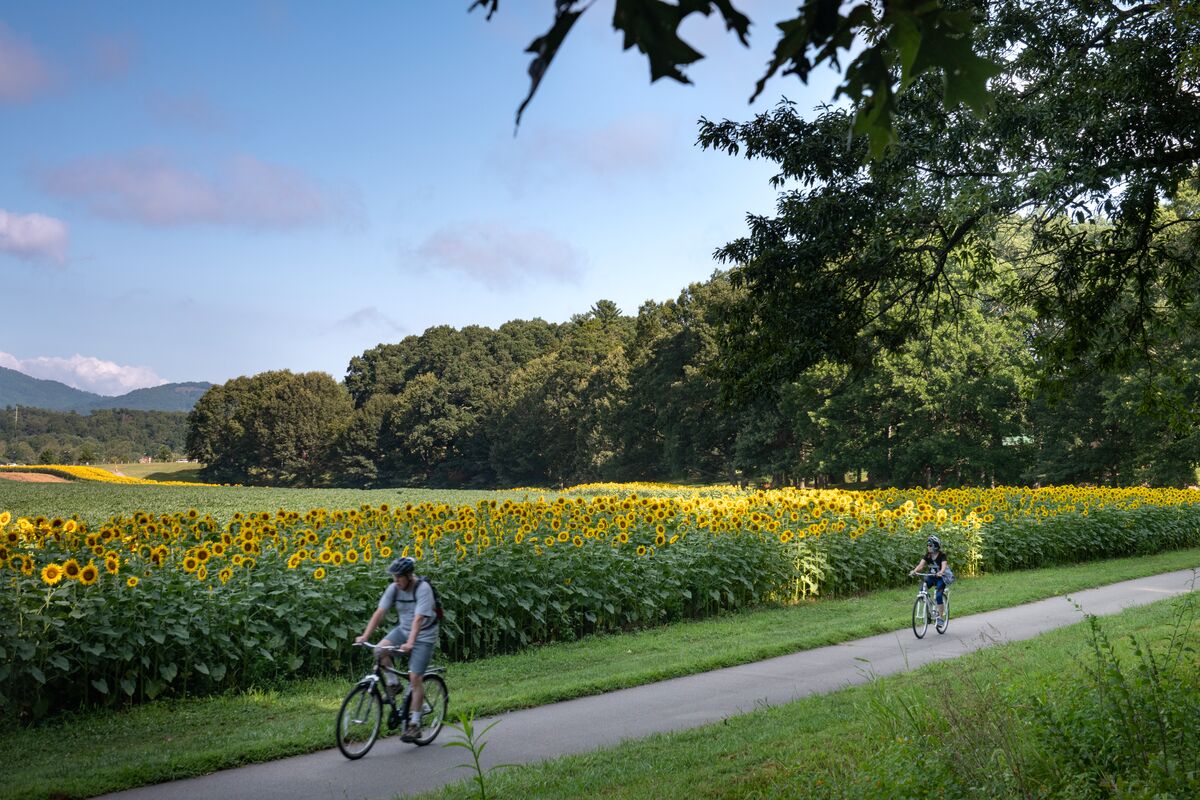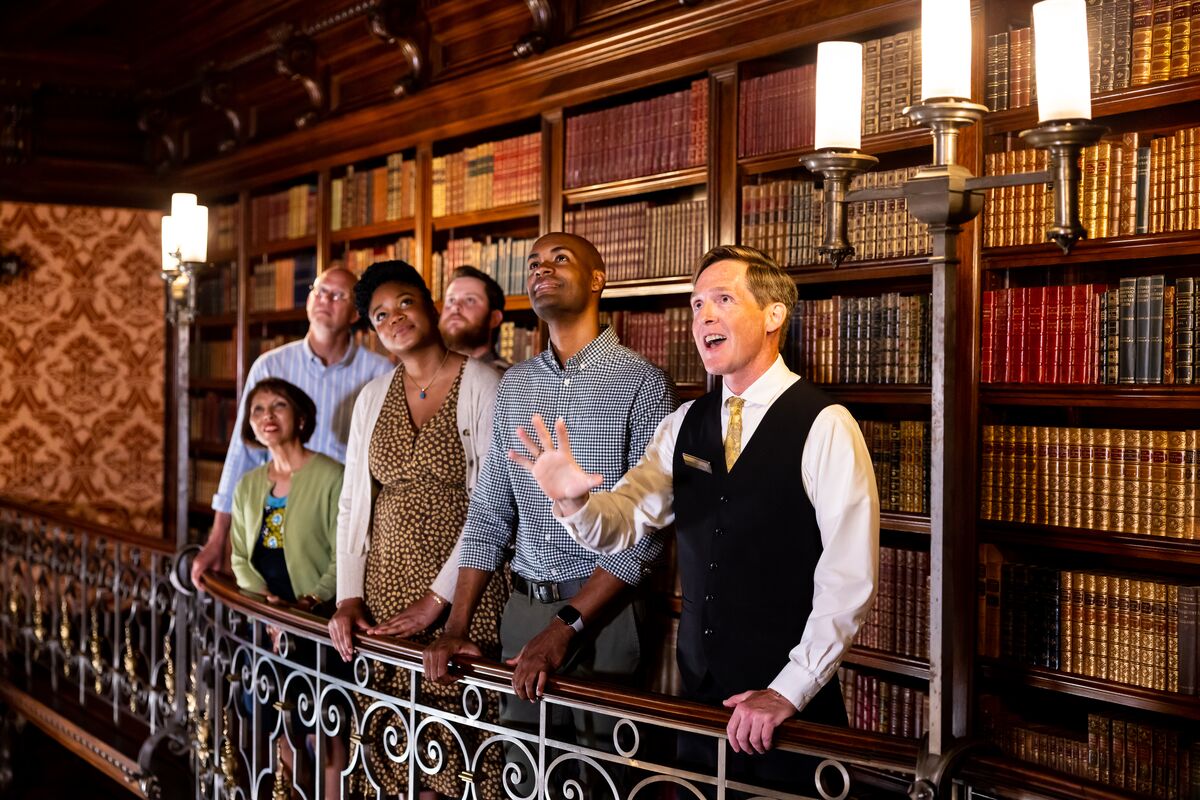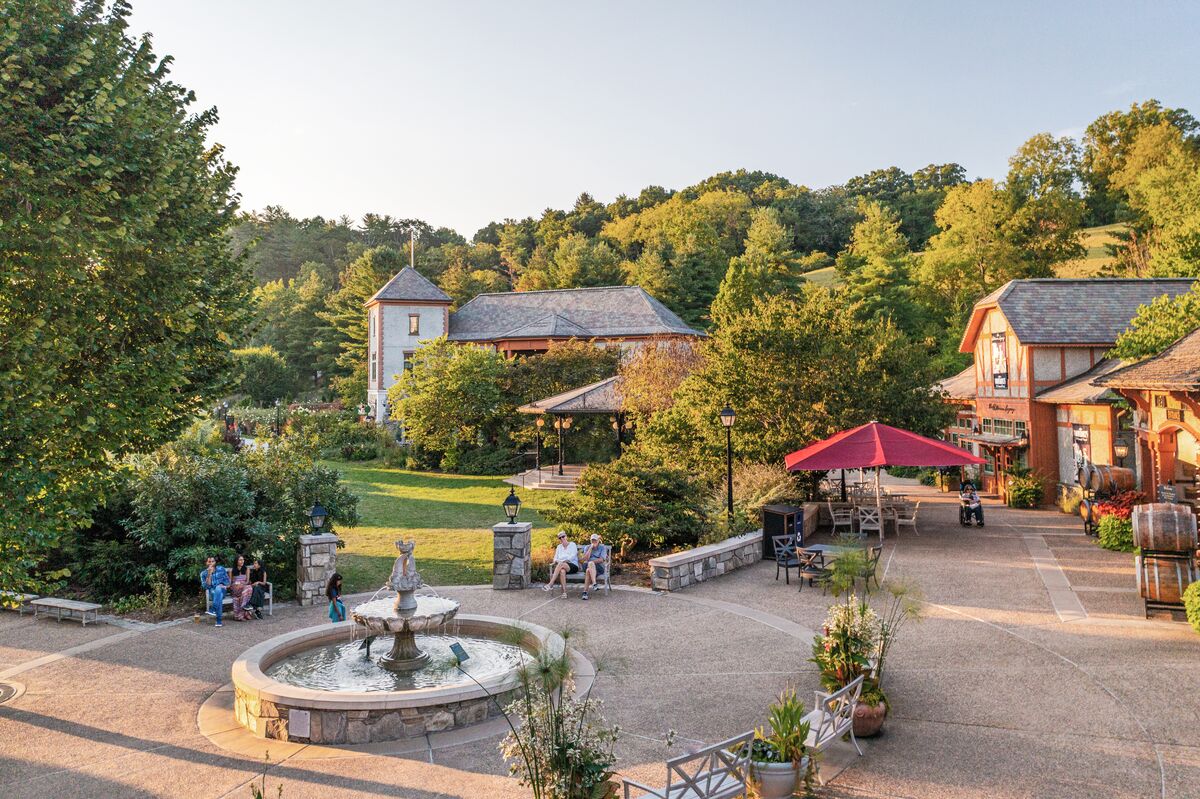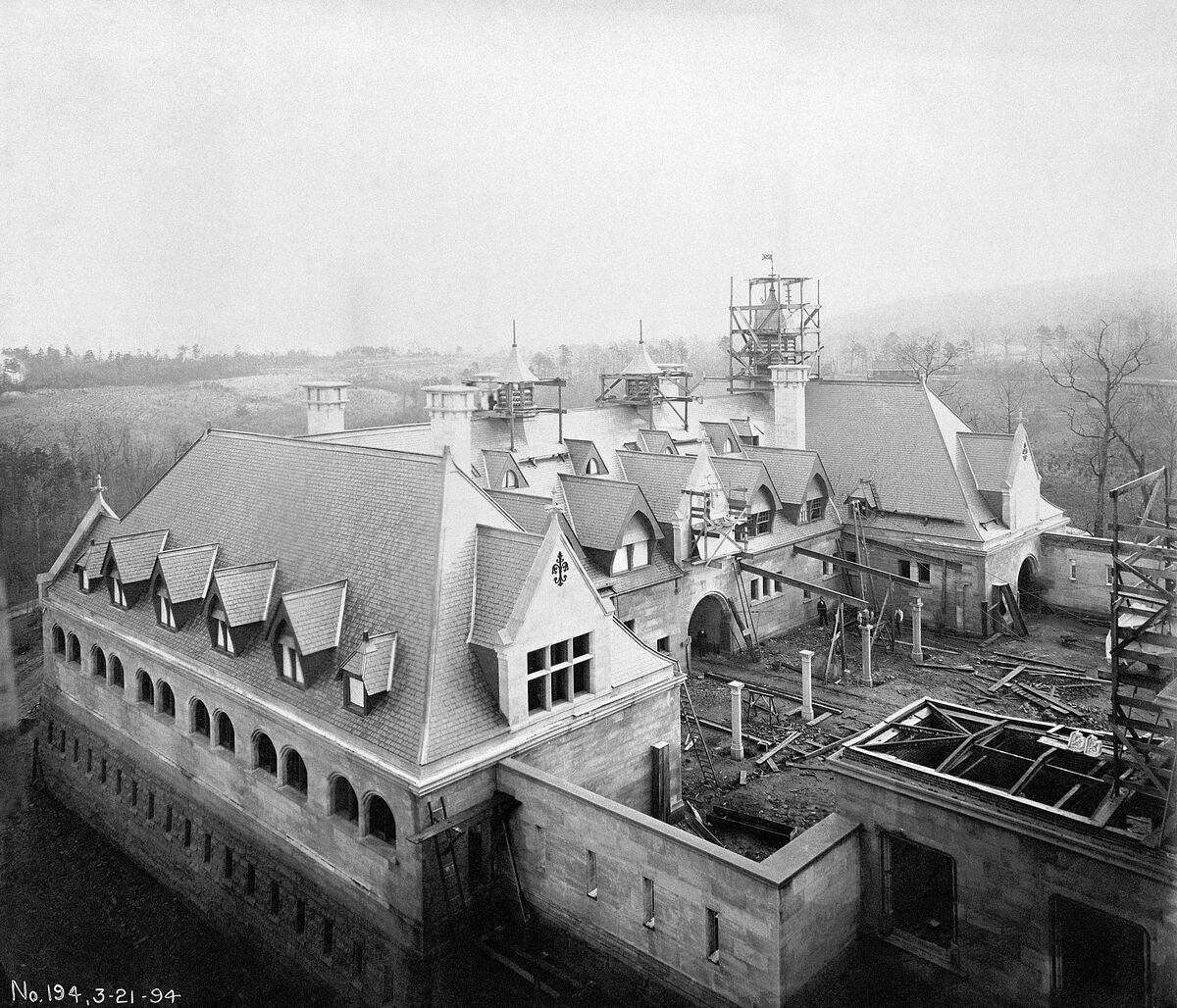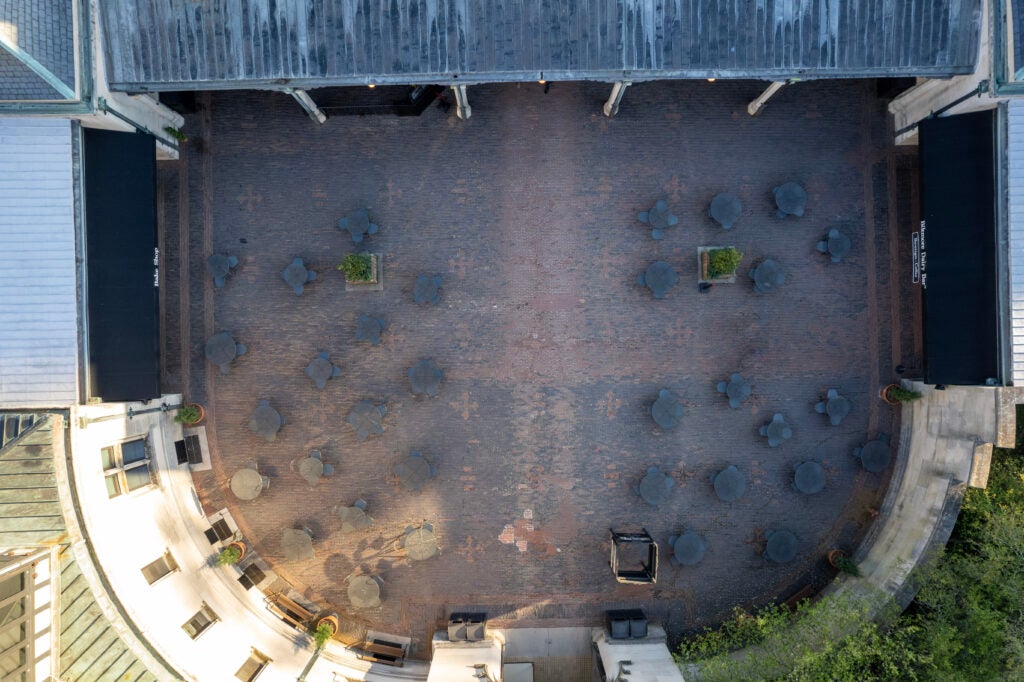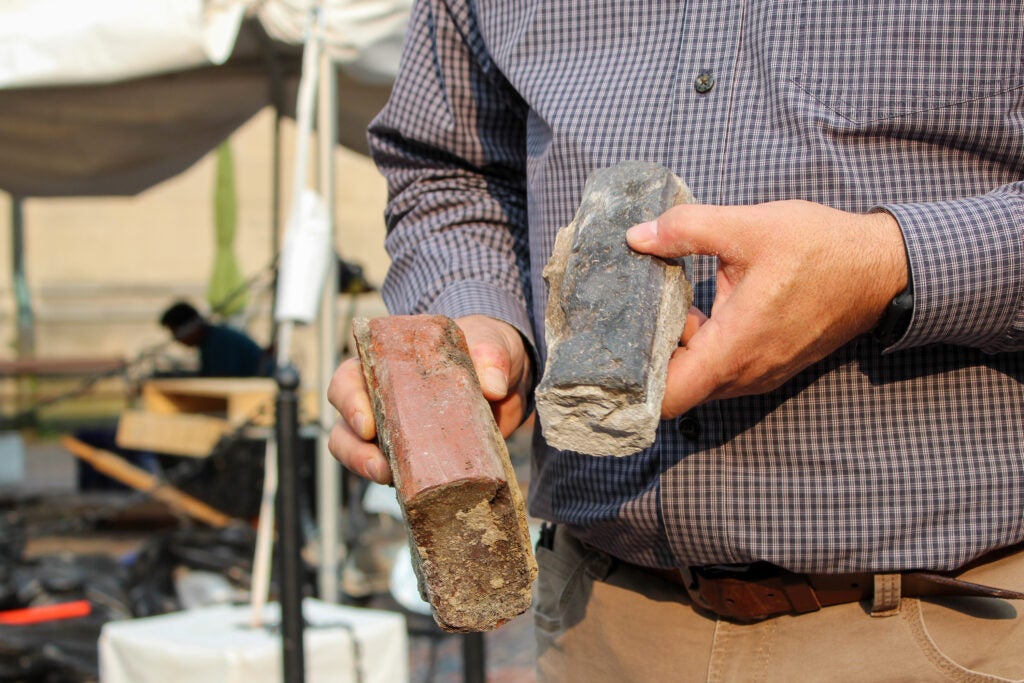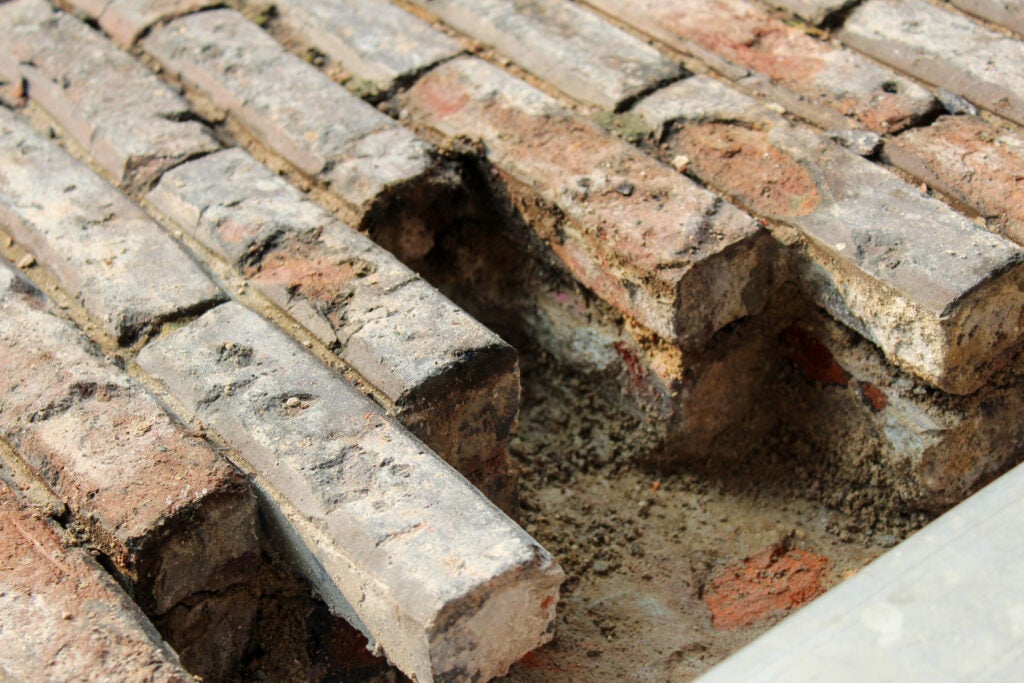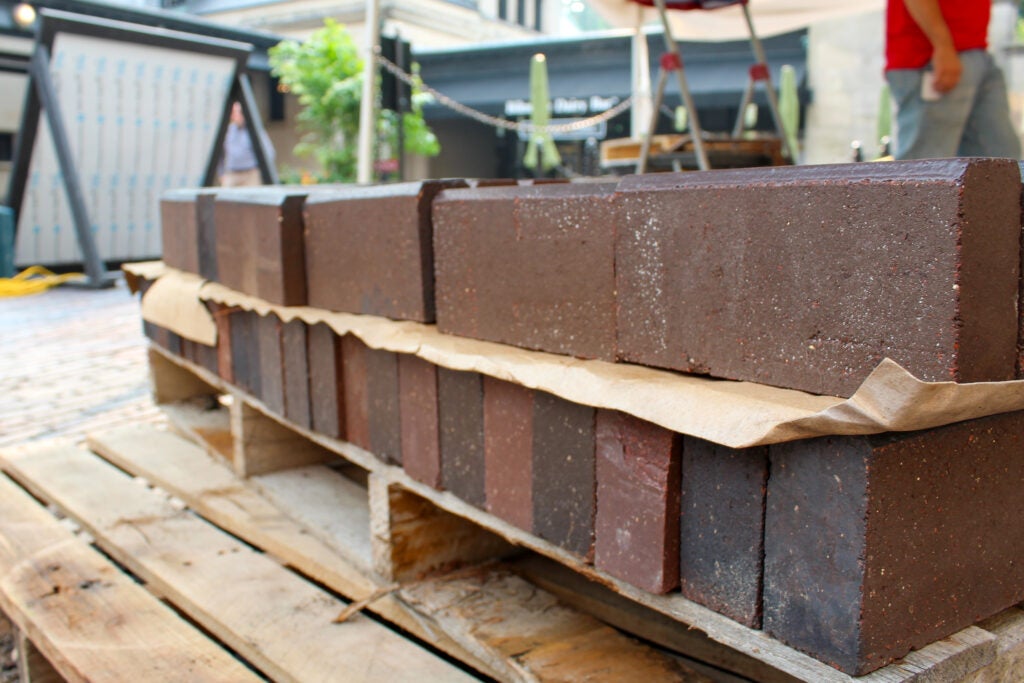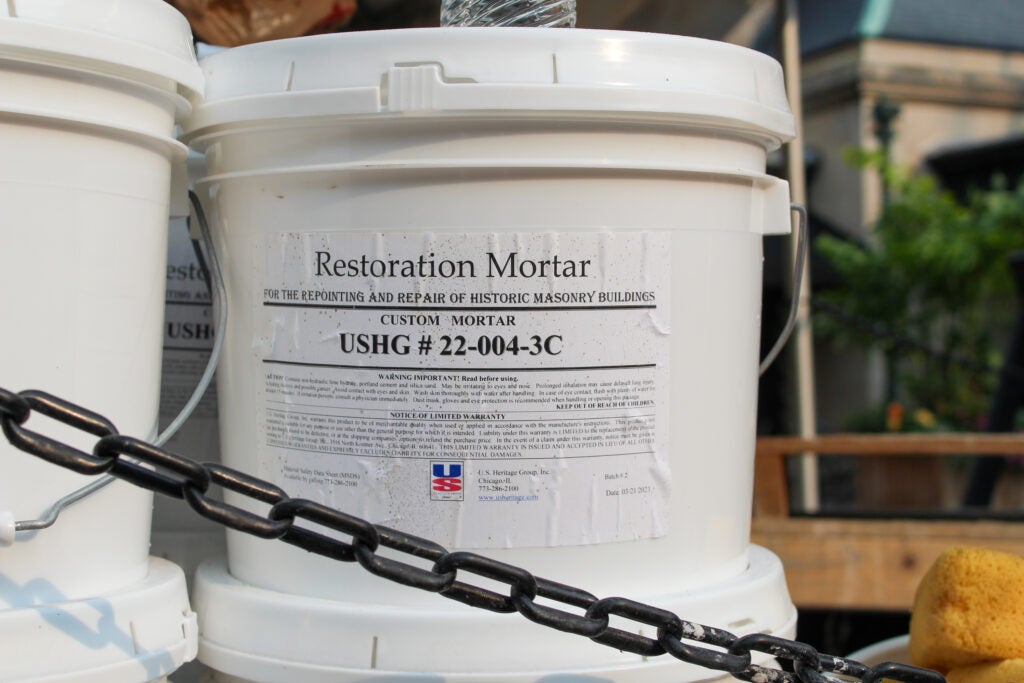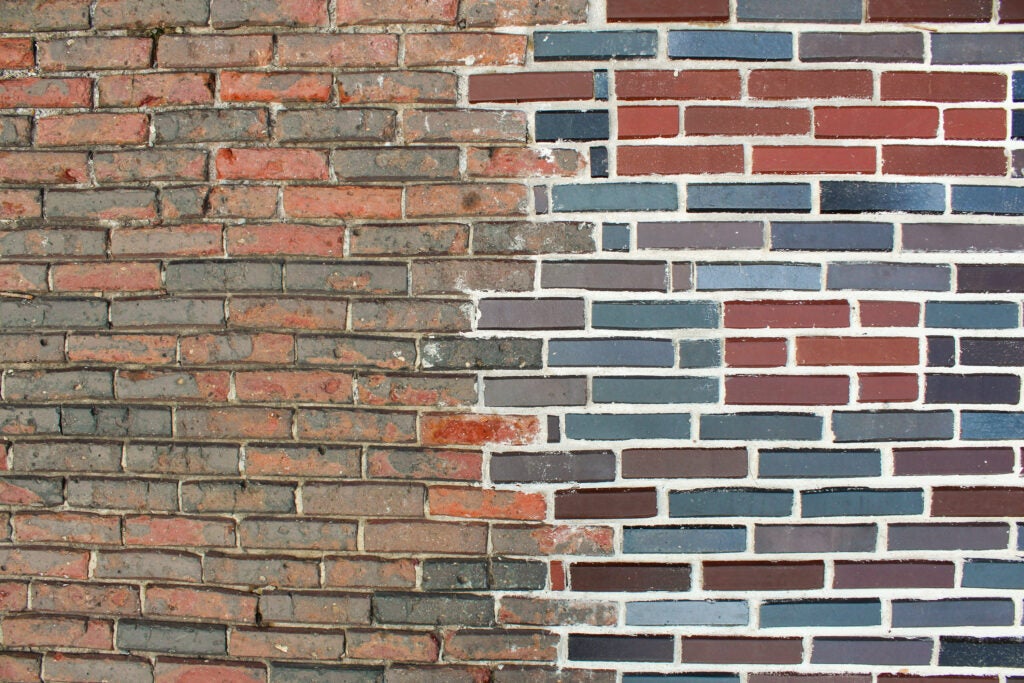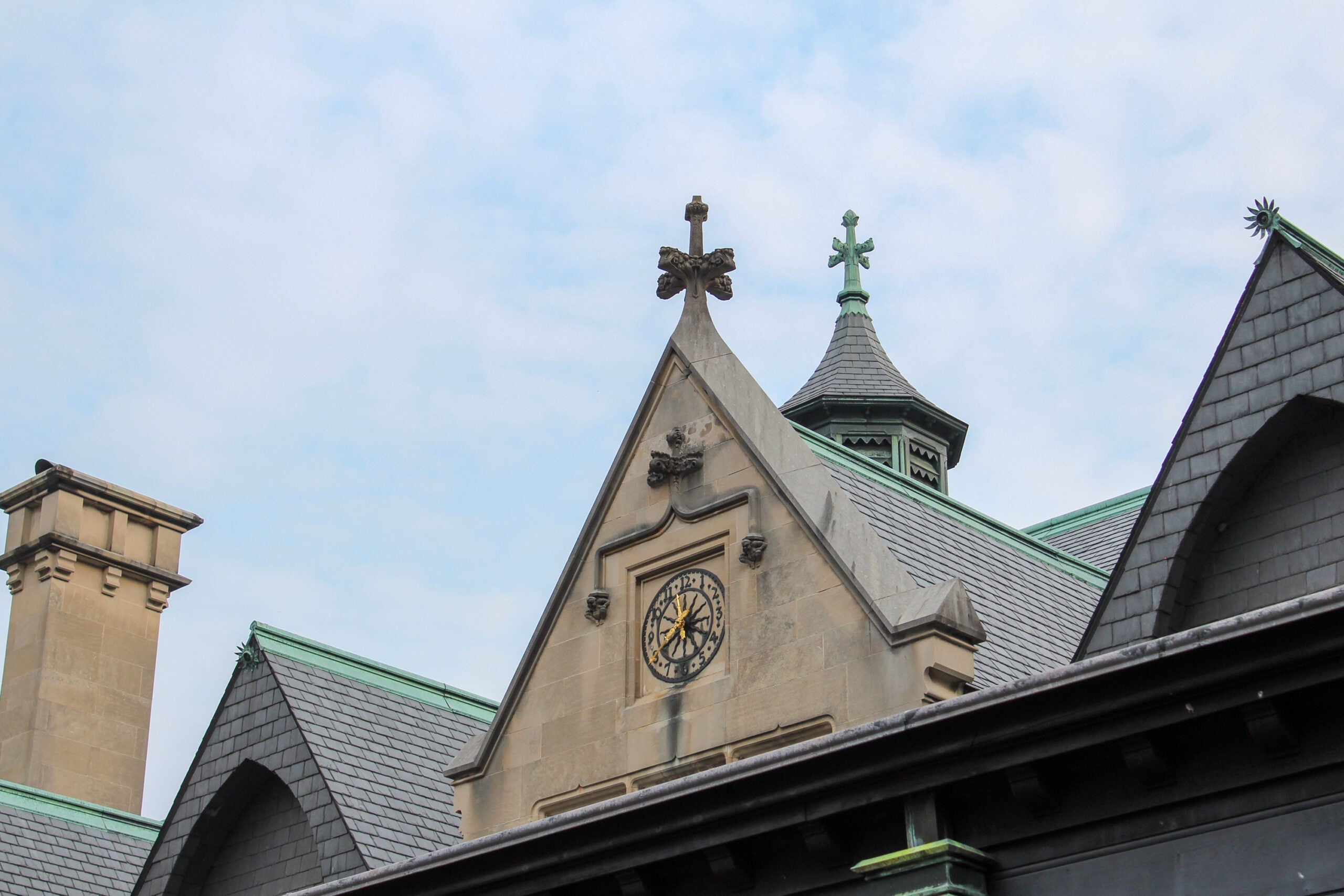Delight family and friends with a dessert as delicious as it is beautiful. Inspired by the traditional French bûche de Noël or yule log seasonal cake, Biltmore Pastry Chef Aaron Morgan developed a fresh twist on the classic confection with the addition of a rich peanut butter-cream cheese filling and elegant Italian buttercream icing that resembles freshly fallen snow.
Once the cake is assembled, branch out with decorative elements such as marzipan mushrooms, sugared berries, and fresh herbs that help make your yule log the highlight of any holiday or winter-themed gathering.
Wine Pairing Suggestion: Slice and serve with our Biltmore Estate Riesling or Limited Release Dry Riesling.
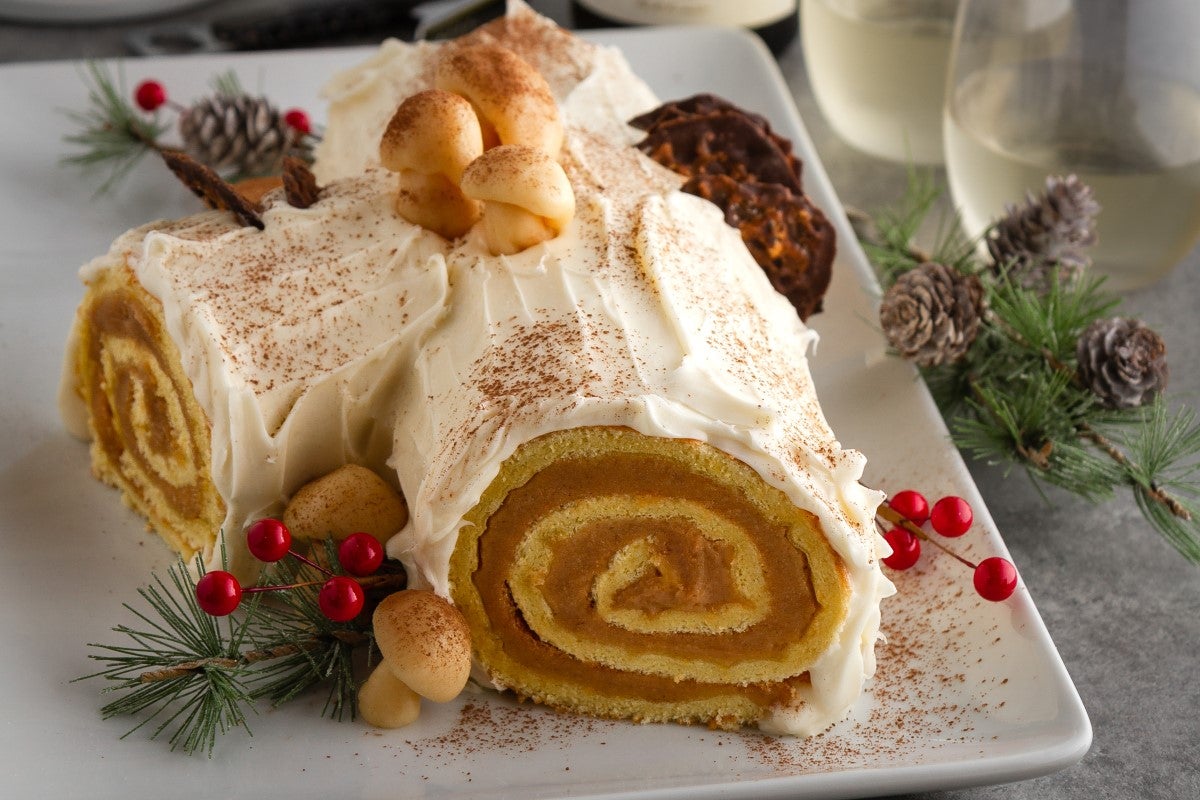
Peanut Butter Yule Log or “Buche de Noel”
Total time: 5 hours Serving Size: 6 people
Ingredients:
For the biscuit roulade:
- 3 whole large eggs
- 6 large egg yolks
- 1 cup granulated sugar
- ½ cup all-purpose flour
- 3 large egg whites
- Powdered sugar, for dusting and shaping
For the peanut butter filling:
- 4 ounces cream cheese, softened
- ¾ cup plus 2 tablespoons granulated sugar
- 1 cup creamy peanut butter
- 1 tablespoon unsalted butter, melted
- 1 ½ teaspoons vanilla extract
- ½ cup heavy cream
For the Italian buttercream:
- 2 cups granulated sugar
- ½ cup water
- 1 tablespoon light corn syrup
- 5 large egg whites
- 1 ½ cups unsalted butter, softened and cut into ½-inch pieces
For decoration (optional):
- Marzipan mushrooms, cocoa powder, chocolate Florentine lace cookies, fresh rosemary, fresh or sugared cranberries, etc., as desired
Instructions:
- First, make the biscuit roulade: Heat the oven to 350°F. Spray the bottom and sides of a half-sheet pan (approximately 18x13x1 inches) with cooking spray; line the bottom with parchment paper, then spray the parchment with cooking spray. Set aside.
- In the bowl of a stand mixer using the whisk attachment, beat whole eggs, egg yolks and 1 cup granulated sugar on medium speed for 3 to 5 minutes until the mixture reaches the “ribbon stage,” or turns thick, pale, foamy and forms ribbons in the batter when the whisk is lifted. Fold in flour until just combined.
- In a separate large bowl using an electric hand mixer, beat 3 egg whites on medium-high speed until stiff peaks form. Fold the egg whites into the egg-flour mixture until just combined.
- Pour and spread the batter into the prepared sheet pan. Bake on the center rack of the oven for 14 to 16 minutes or until the cake is just baked through and lightly golden.
- Sprinkle the top of the hot cake generously with powdered sugar (this will help to keep the cake from sticking). Run a paring knife along the edge of the cake to loosen it from the edges of the sheet pan. Top the cake with a light, clean kitchen towel and a large cutting board; carefully but quickly, invert the cake onto the towel/cutting board. Remove the sheet pan and parchment paper from the cake.
- Sprinkle the top of the cake generously with powdered sugar. Starting from one short end, tightly roll up the warm cake in the towel; transfer to a cutting board, small sheet pan or large plate, seam side-down. Set aside to cool completely, about 2 hours (you can refrigerate the cake to speed up the cooling process, if desired).
- Meanwhile, make the peanut butter filling: In the bowl of a stand mixer with the paddle attachment, beat cream cheese and ¾ cup plus 2 tablespoons granulated sugar on medium speed for 30 seconds to 1 minute or until the mixture is smooth and creamy. Beat in the peanut butter, melted butter and vanilla extract on medium speed for 1 minute or until well-combined and smooth, scraping the sides often.
- In a separate large bowl using an electric hand mixer, beat heavy cream on medium-high speed until stiff peaks form. Fold the heavy cream into the cream cheese-peanut butter mixture until just combined.
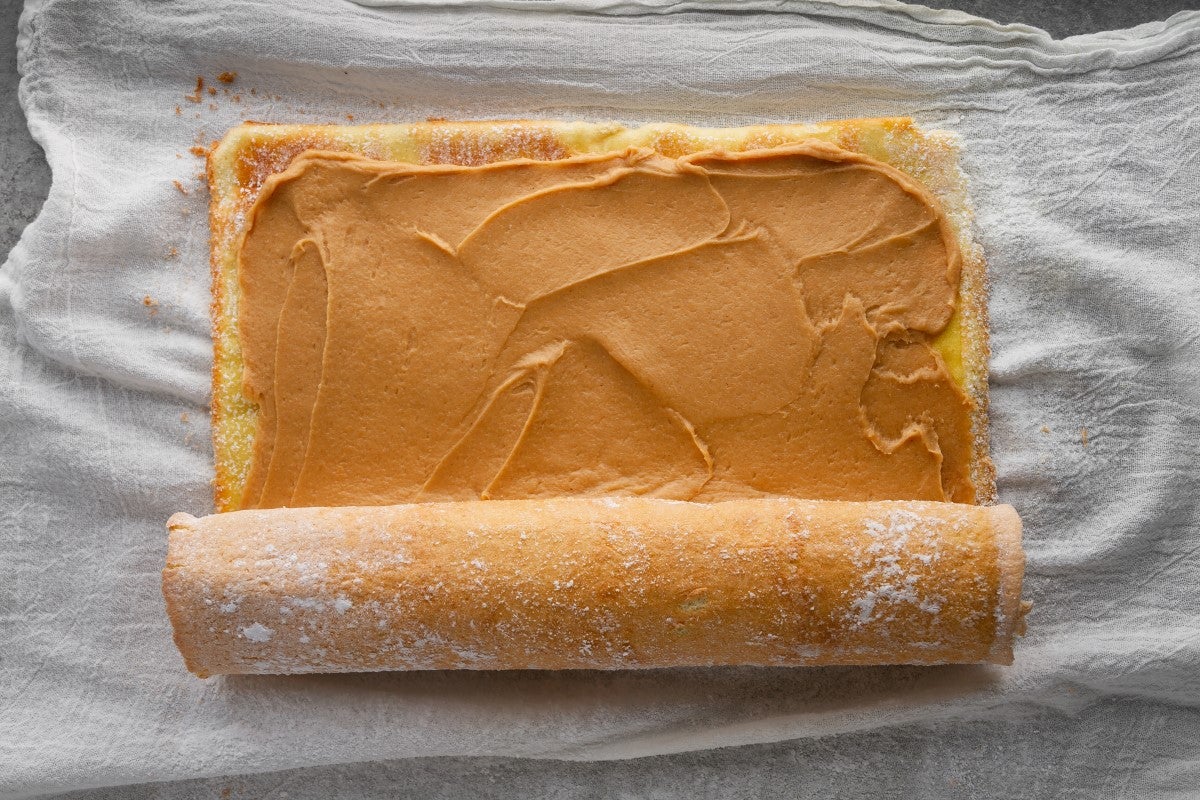
- Assemble the cake: On a clean work surface, carefully unroll the fully cooled cake. Spread peanut butter filling evenly over the top of the cake all the way to the edges. Reroll the cake and return to the cutting board/sheet pan; cover with plastic wrap and freeze for 1 hour to set the cake.
- Meanwhile, make the Italian buttercream: In a medium saucepan over medium-low heat, stir 2 cups granulated sugar, water and corn syrup to combine. Cook, stirring occasionally, until an instant-read thermometer reads 245°F to 250°F when inserted into the mixture.
- While the sugar mixture cooks, in the bowl of a stand mixer with the whisk attachment, beat 5 egg whites on medium-high speed until stiff peaks form.
- With the stand mixer still running on medium-high speed, carefully and slowly pour hot sugar mixture into the egg whites. Continue to whip the mixture for 10 to 15 minutes or until it is fully cooled and turns to a light, fluffy, glossy meringue.
- With the stand mixer still running on medium-high speed, add softened butter, one piece at a time, beating until the butter is fully incorporated and a light, fluffy, smooth frosting forms. If the frosting is too thin, cover and refrigerate until more firm.
- Finally, assemble the cake: Use a sharp knife to cut one end of the chilled cake on an angle a few inches from the end; arrange the cut piece on one side of the cake to form a “branch.” Slice off the very end of the branch for a clean edge, if desired. Frost the top and sides of the cake with the buttercream (you may not use all of the buttercream); use an offset spatula to texture the sides, as desired.
- Decorate and garnish the cake with marzipan mushrooms, Florentine lace cookies, cocoa powder, etc. as desired. Store cake loosely covered in the refrigerator for up to 5 days.
Tip: Don’t worry if your Peanut Butter Yule Log isn’t as smooth as you’d like—the snowy Italian buttercream frosting and decorations help cover any imperfections!
